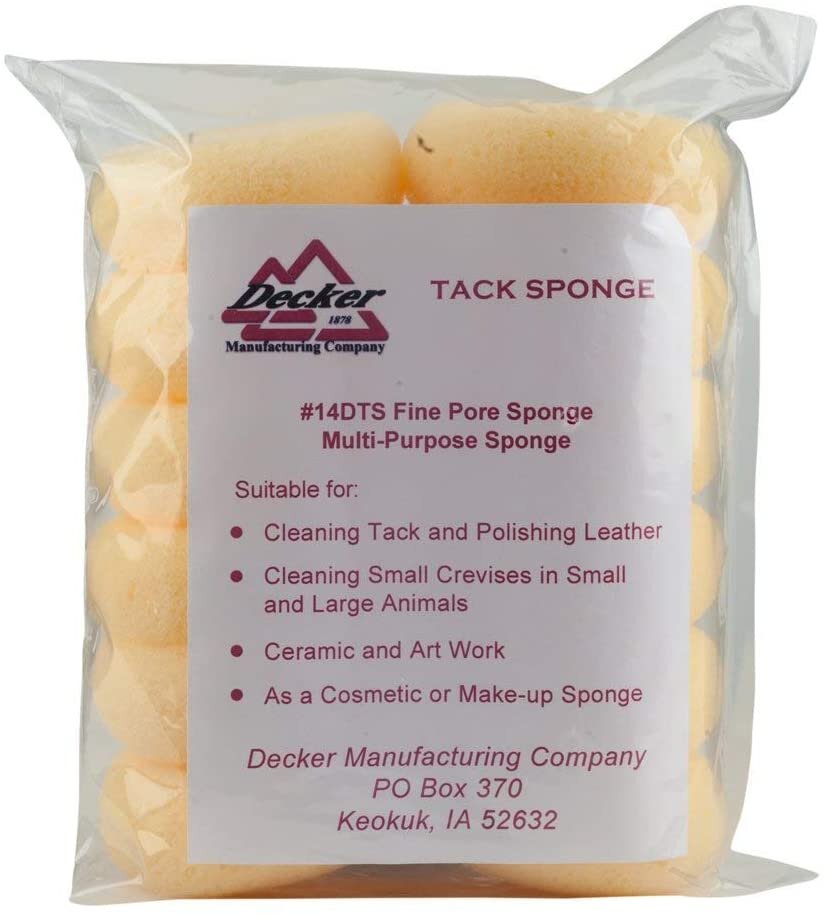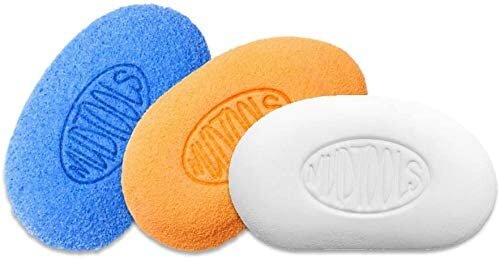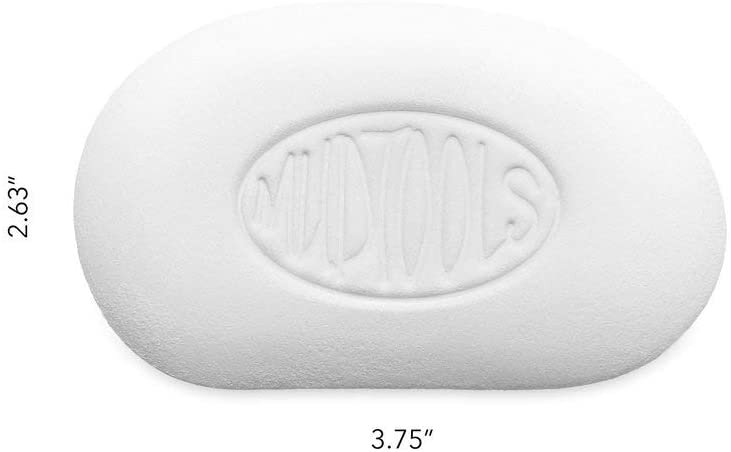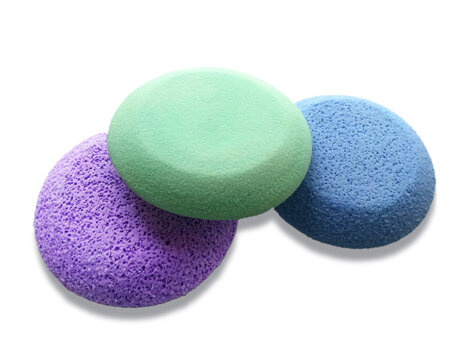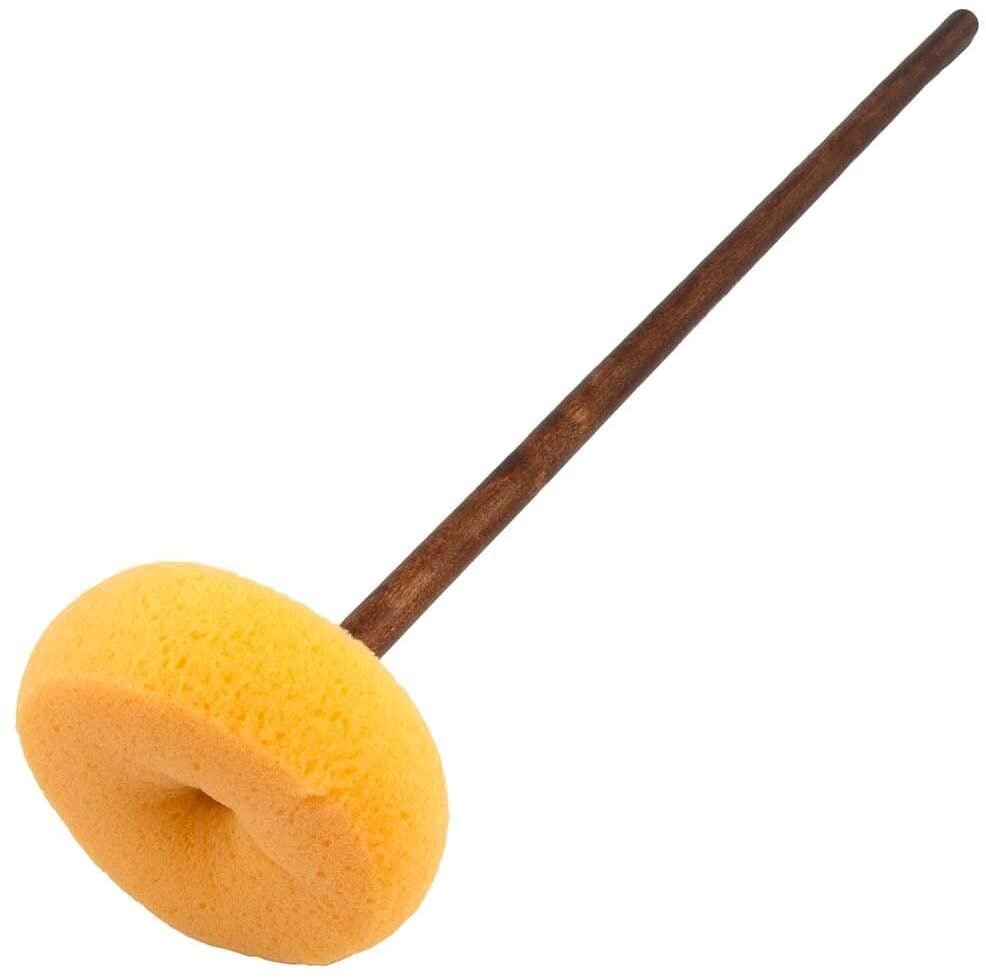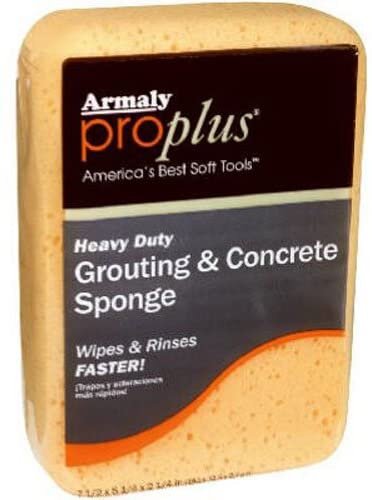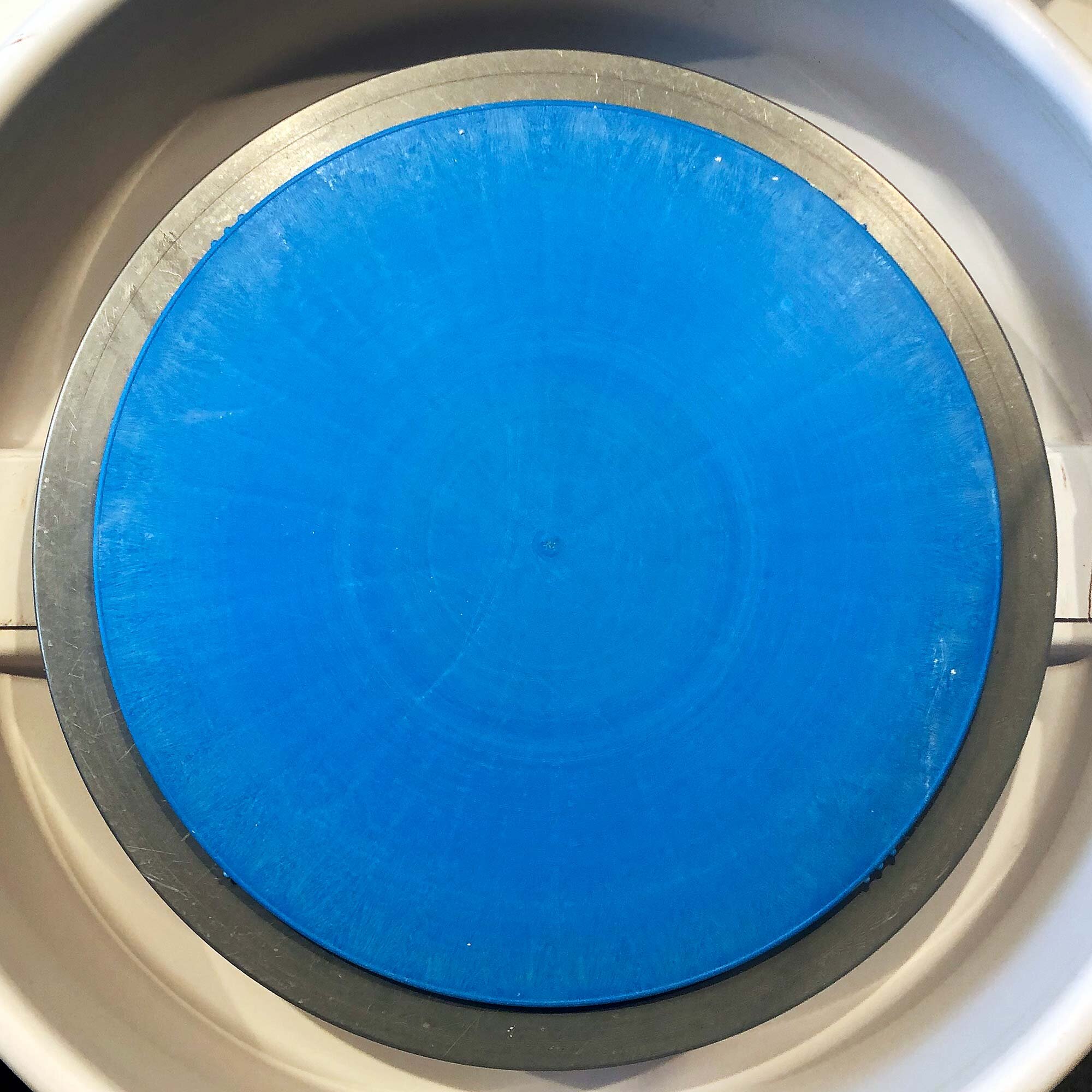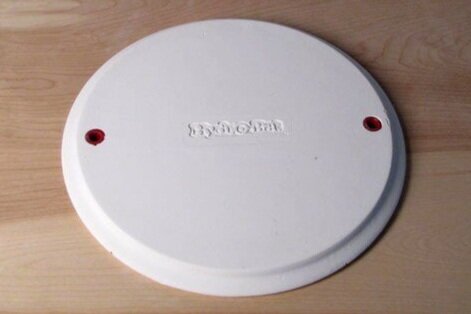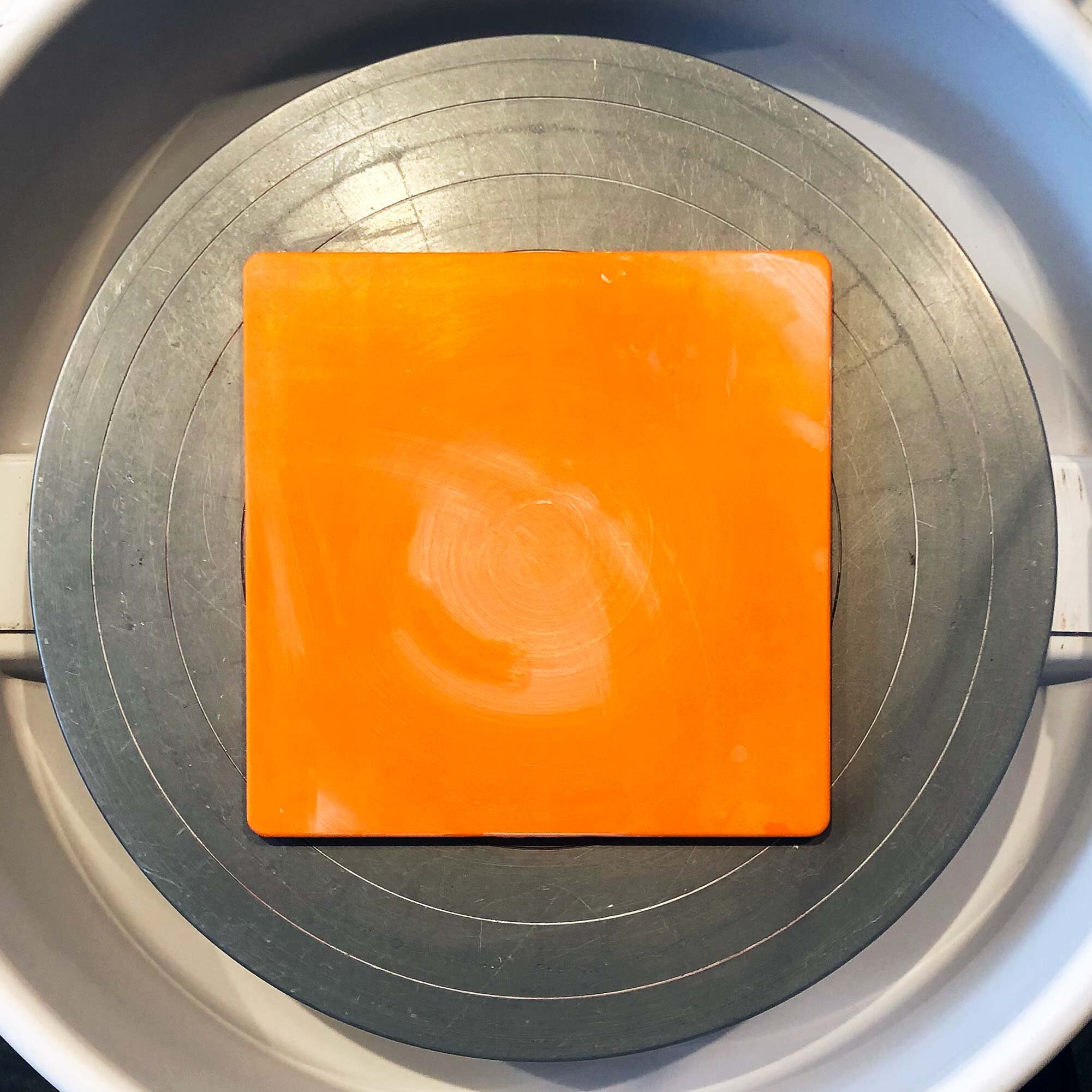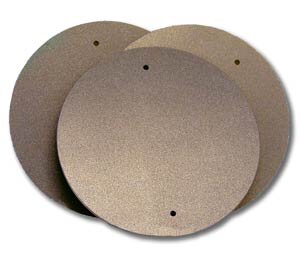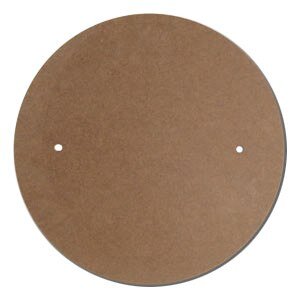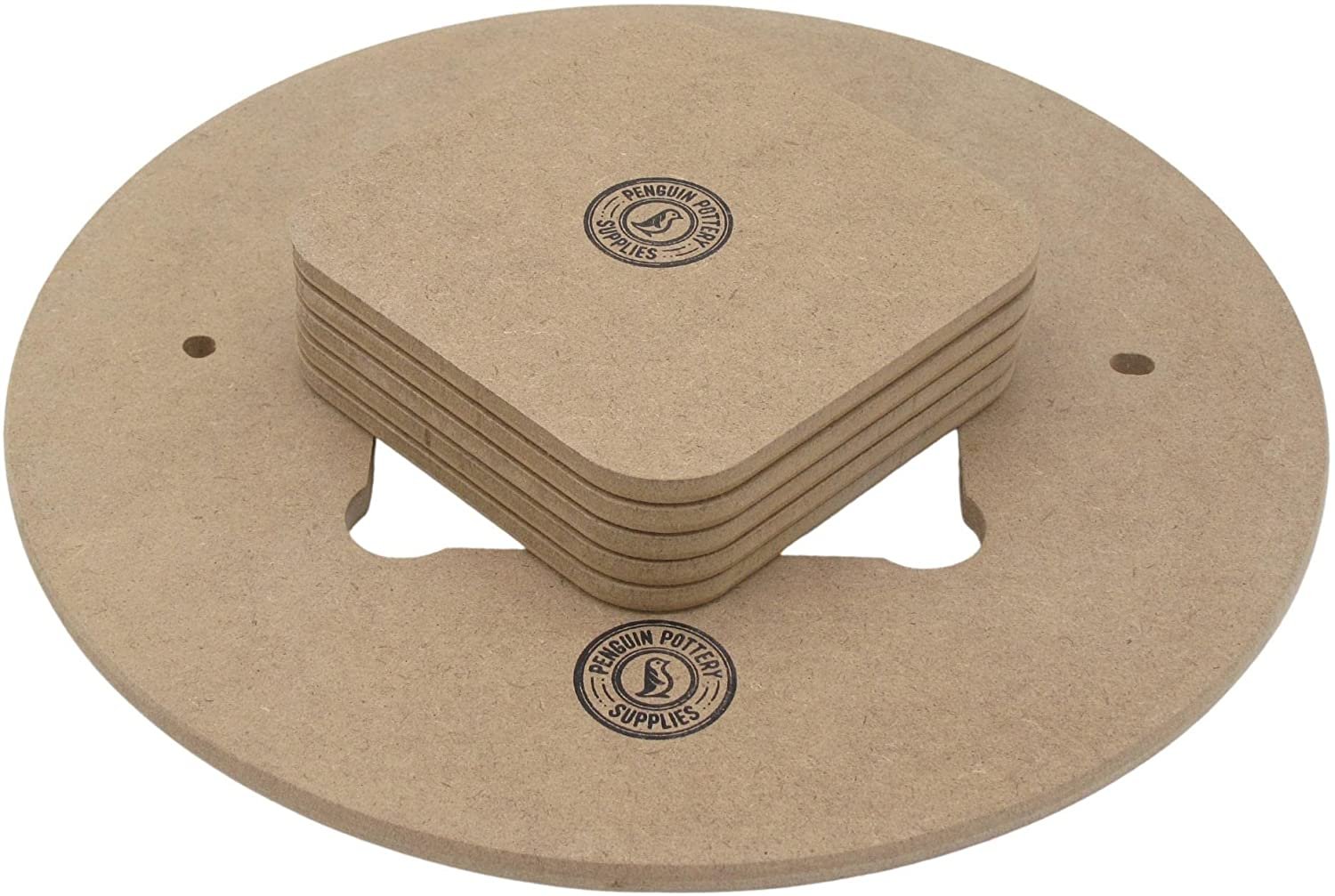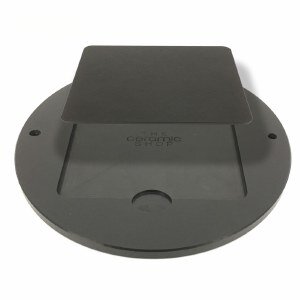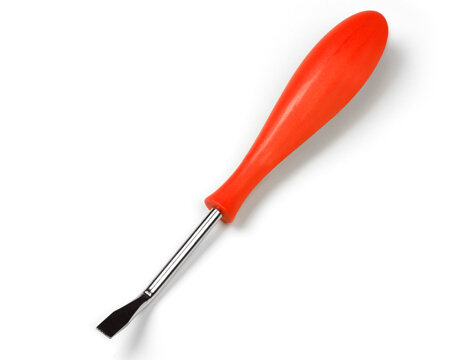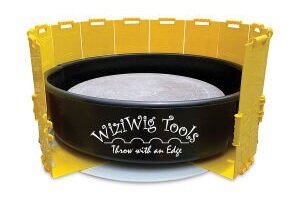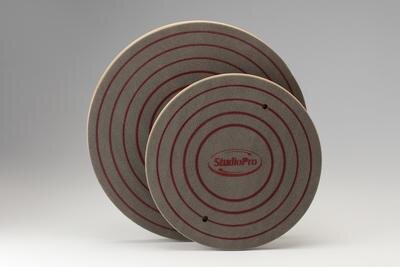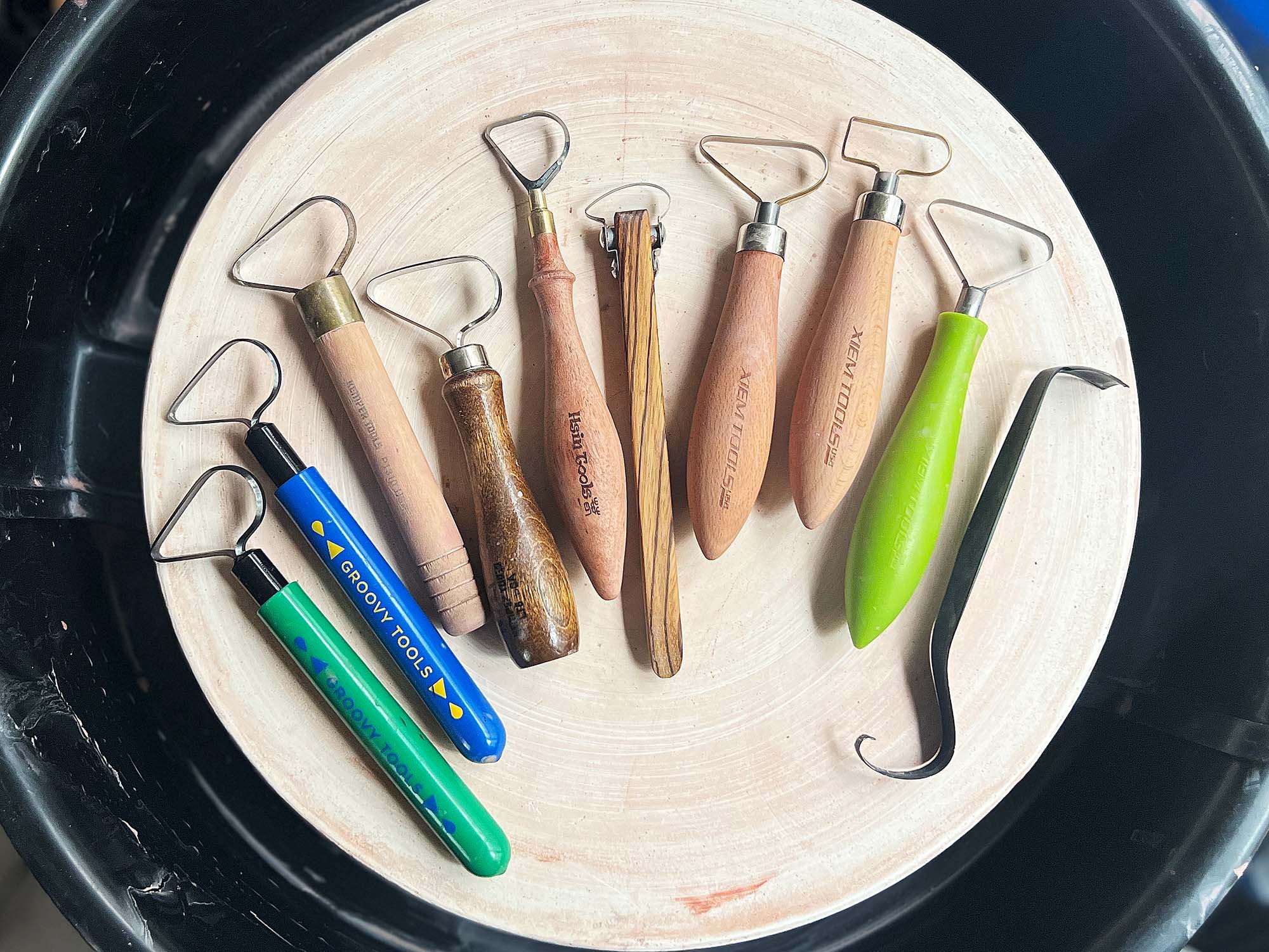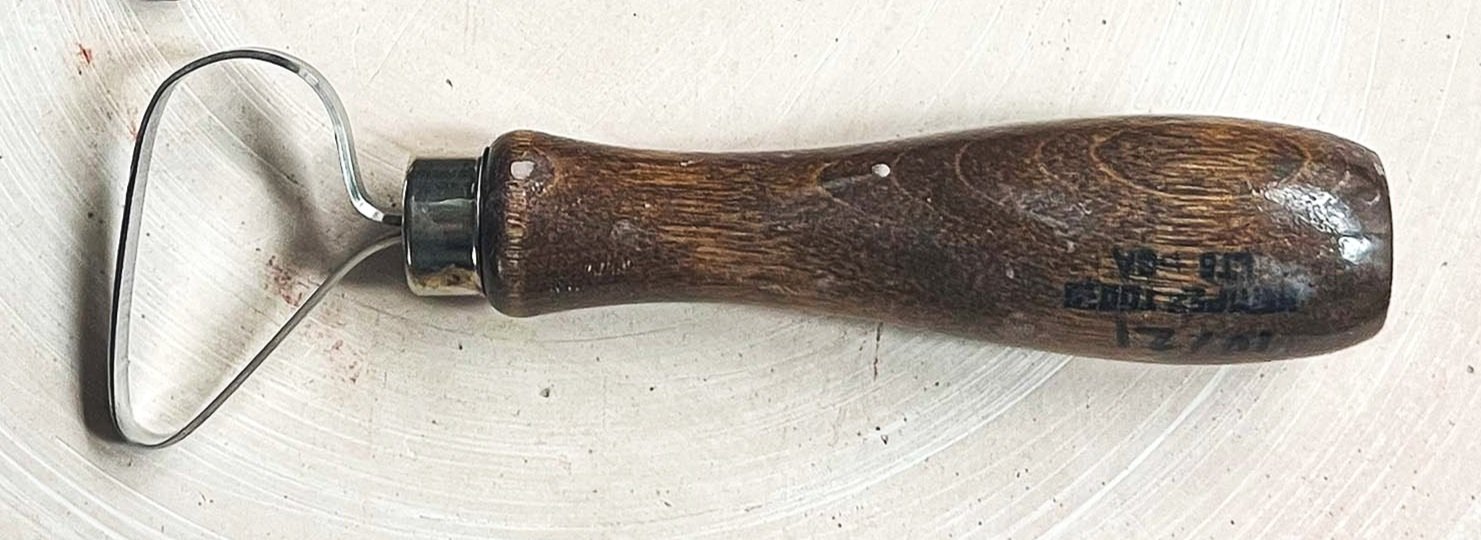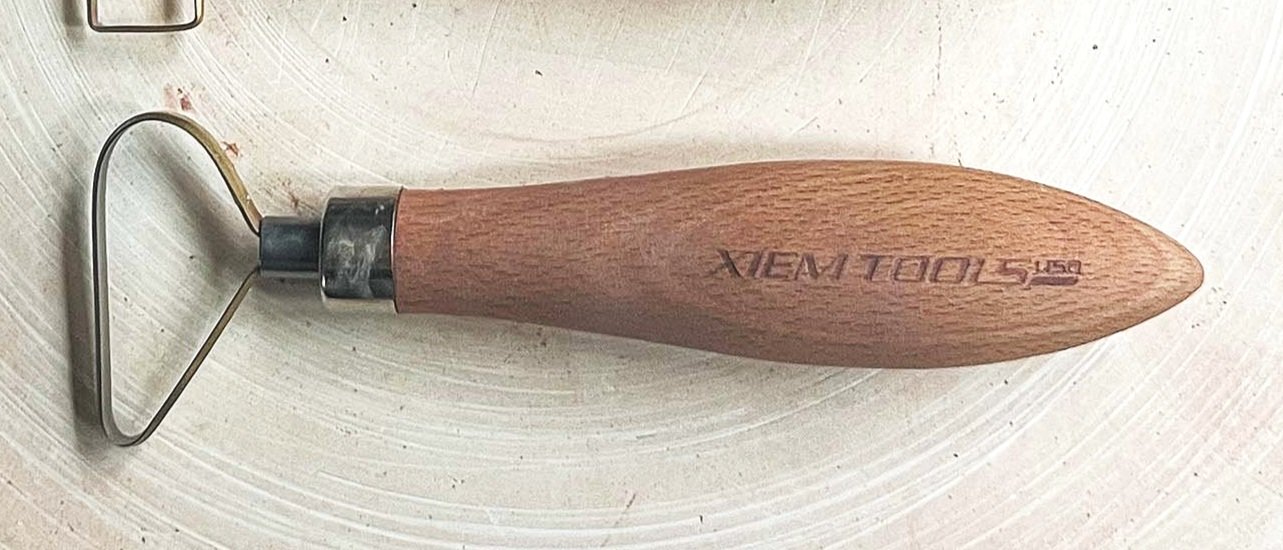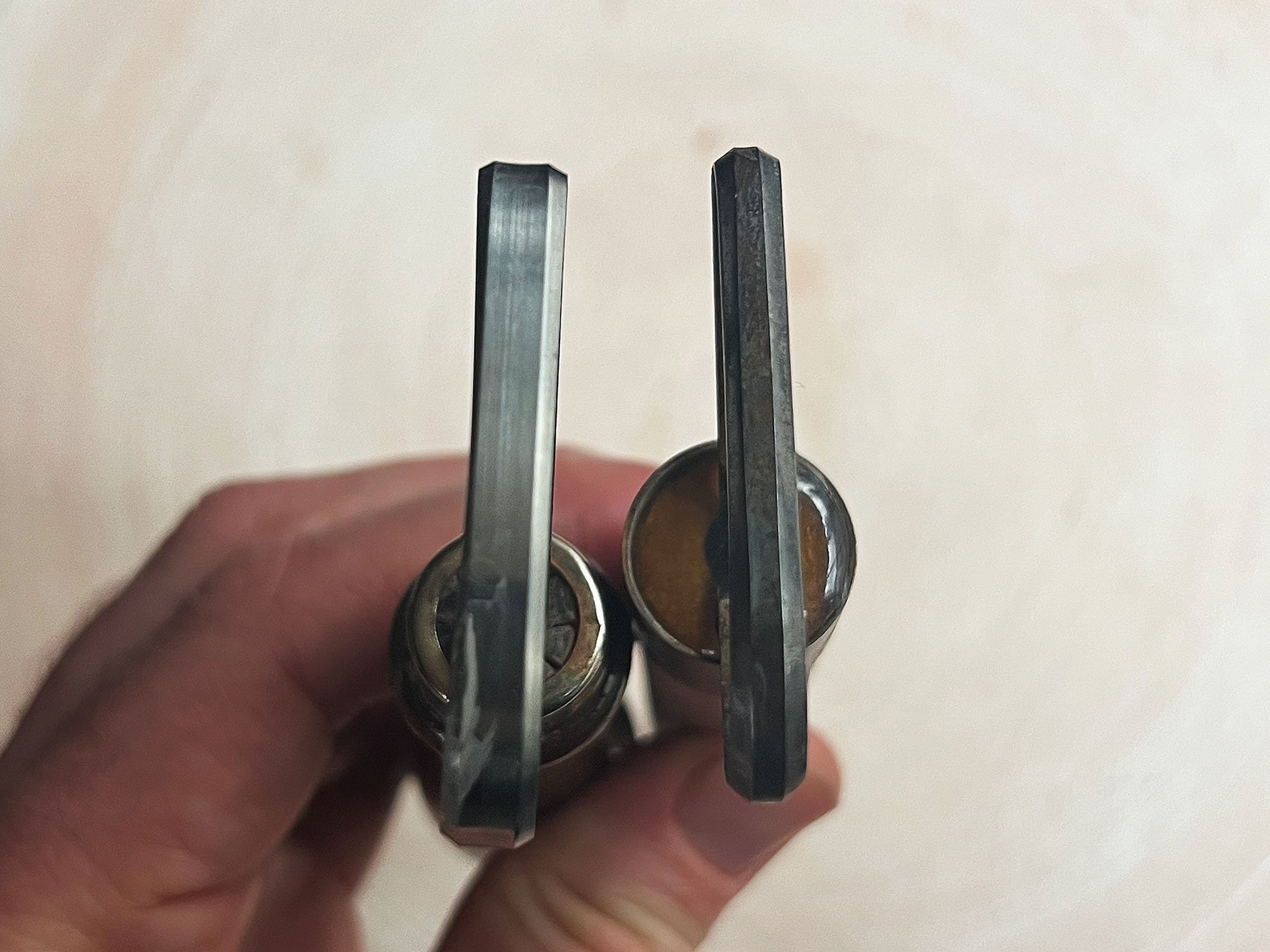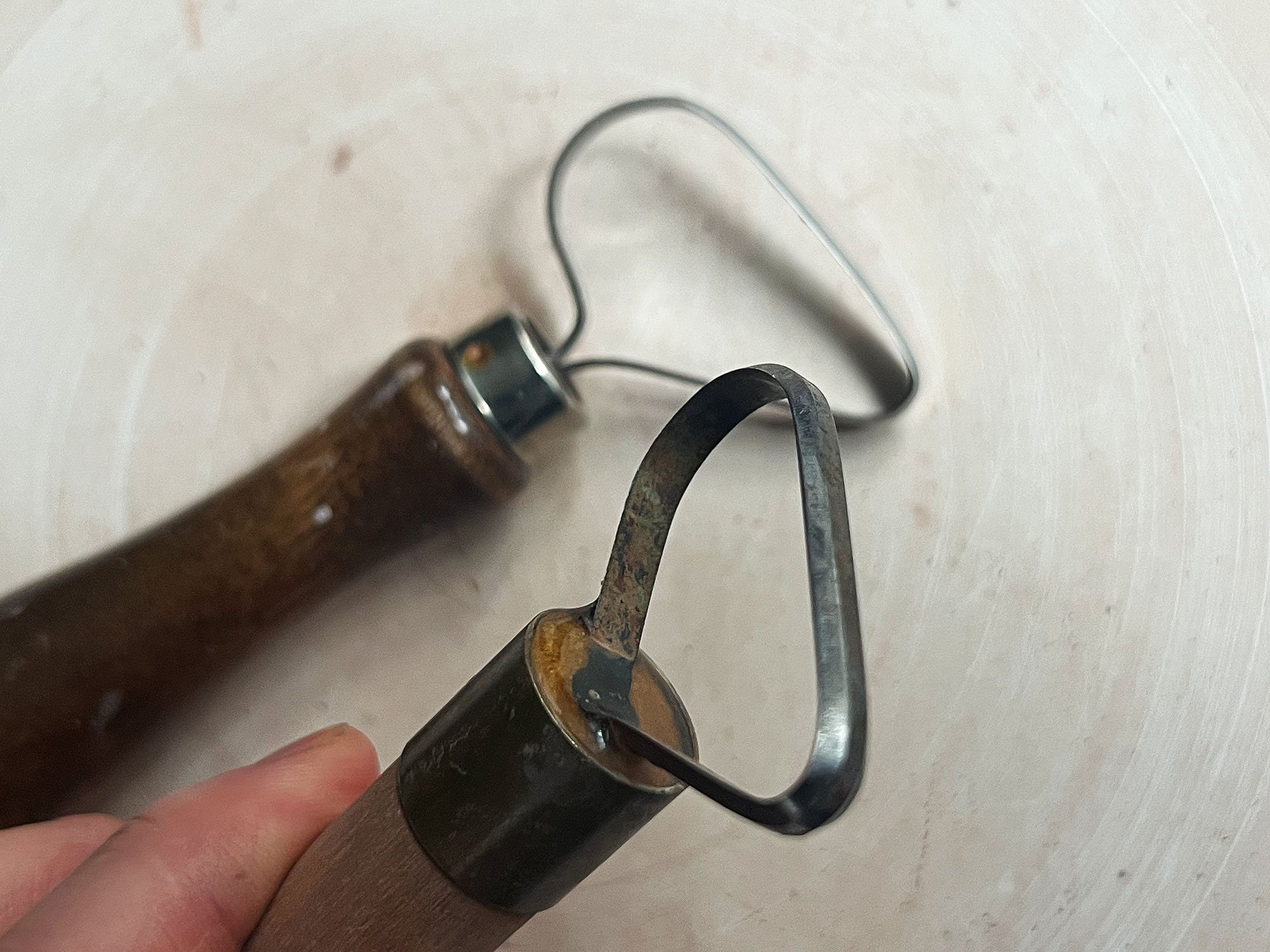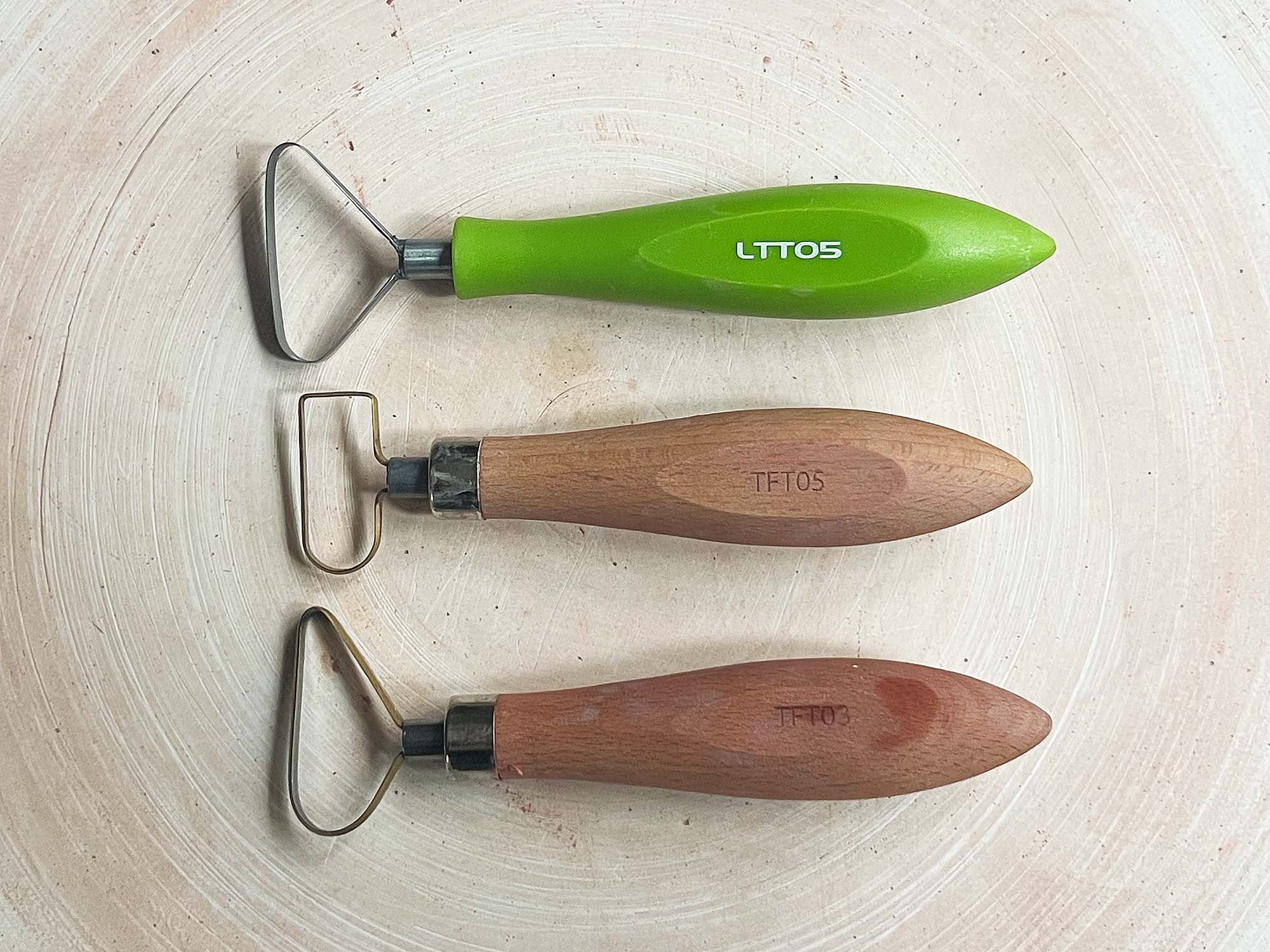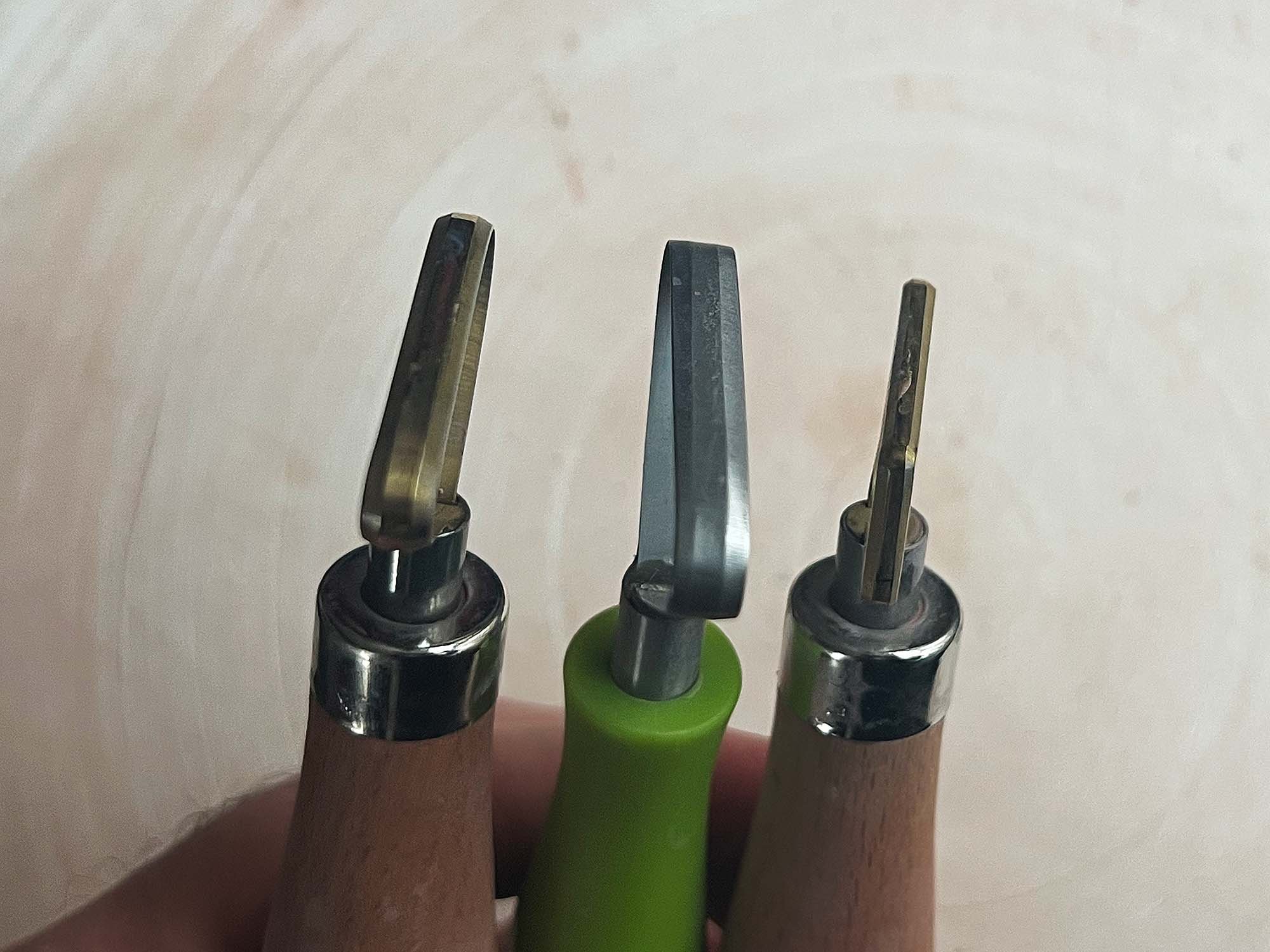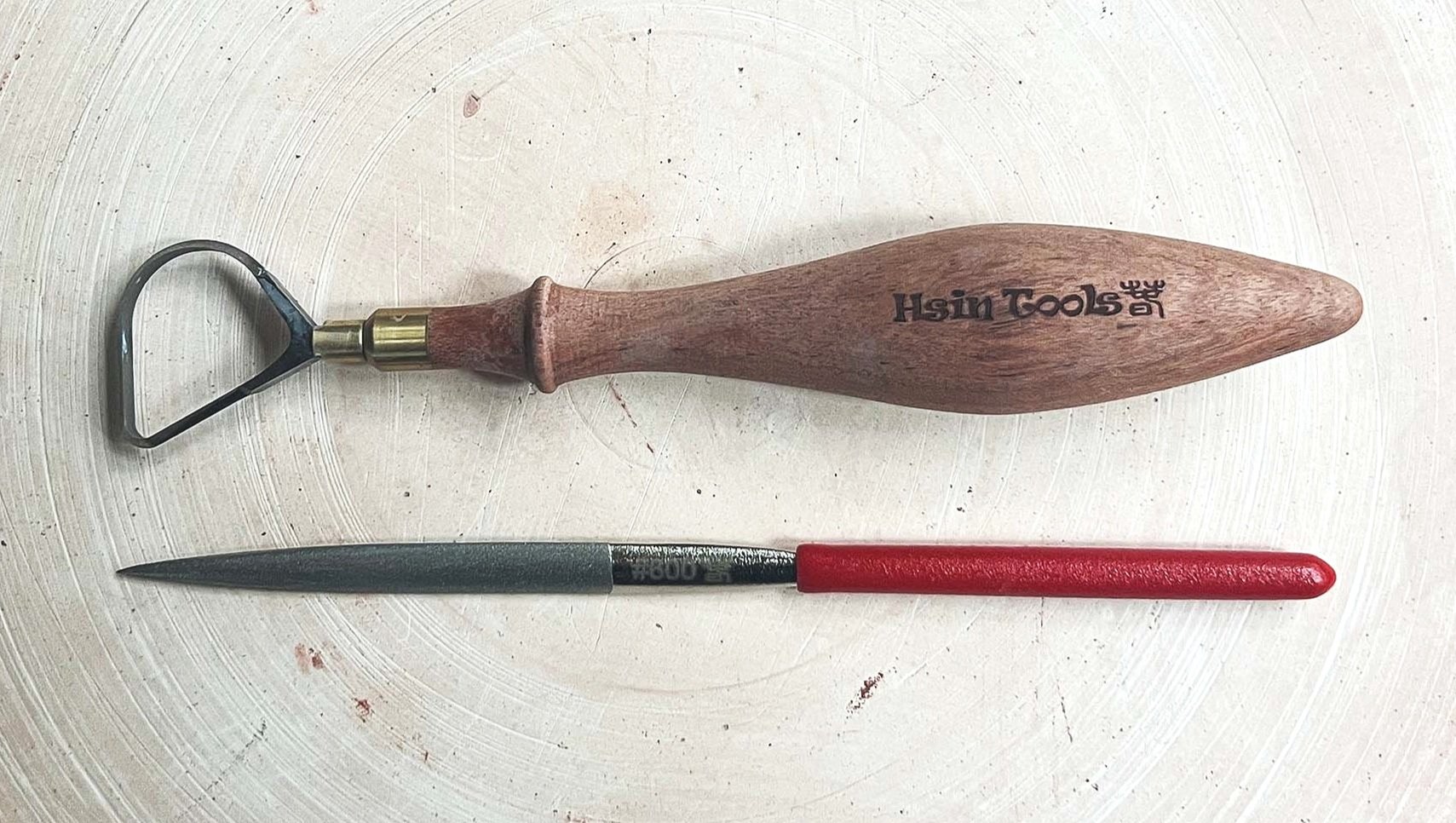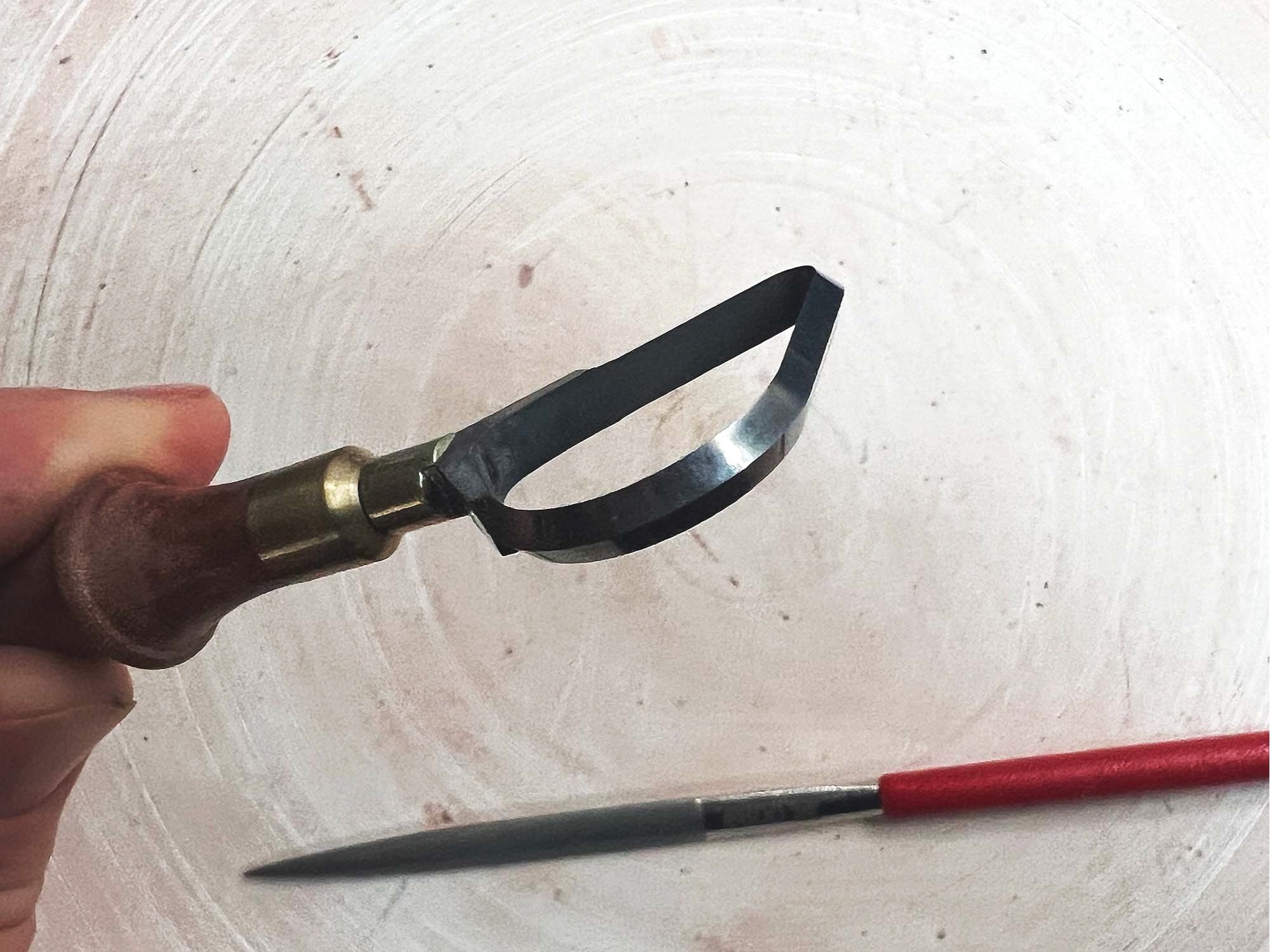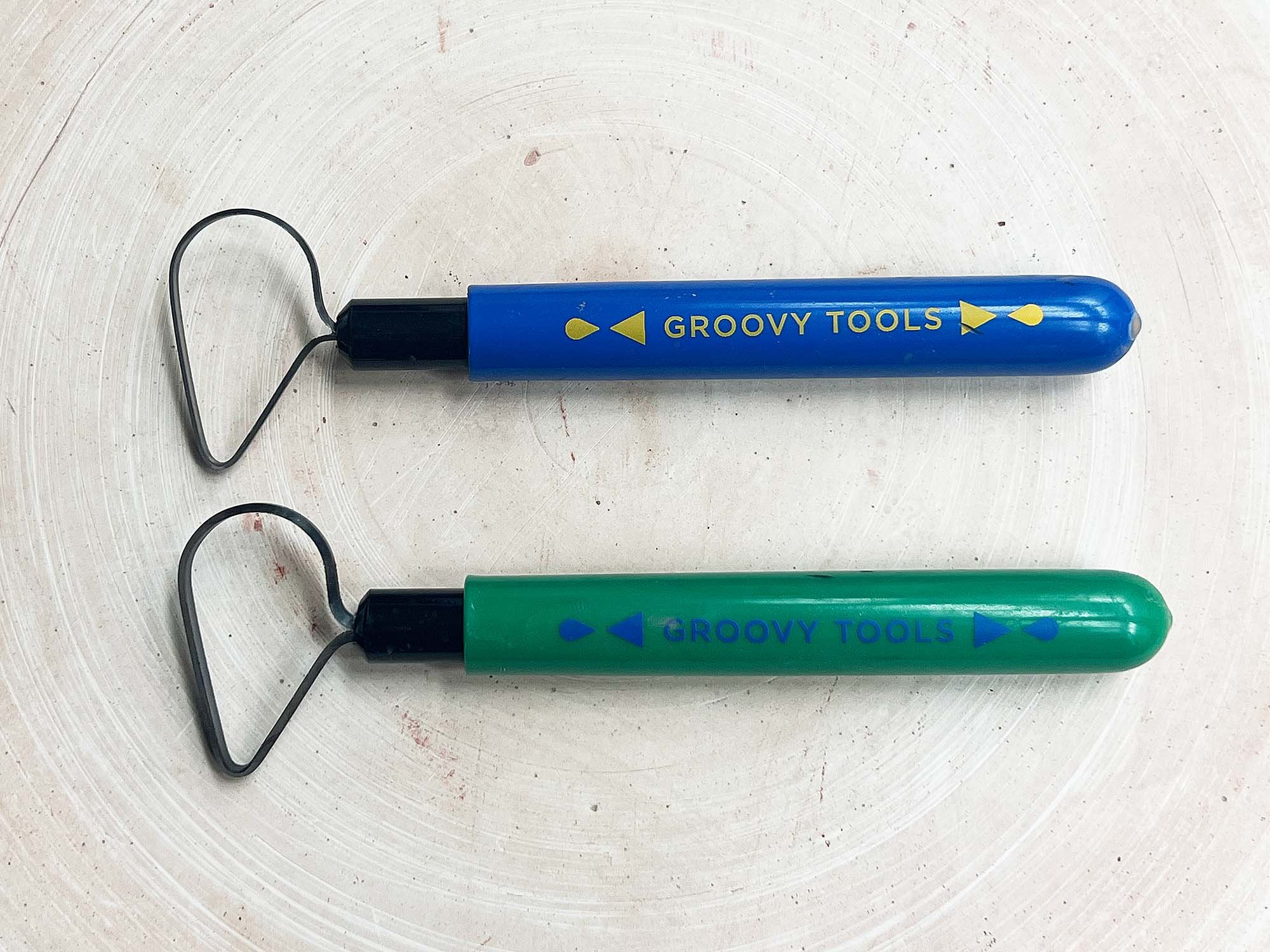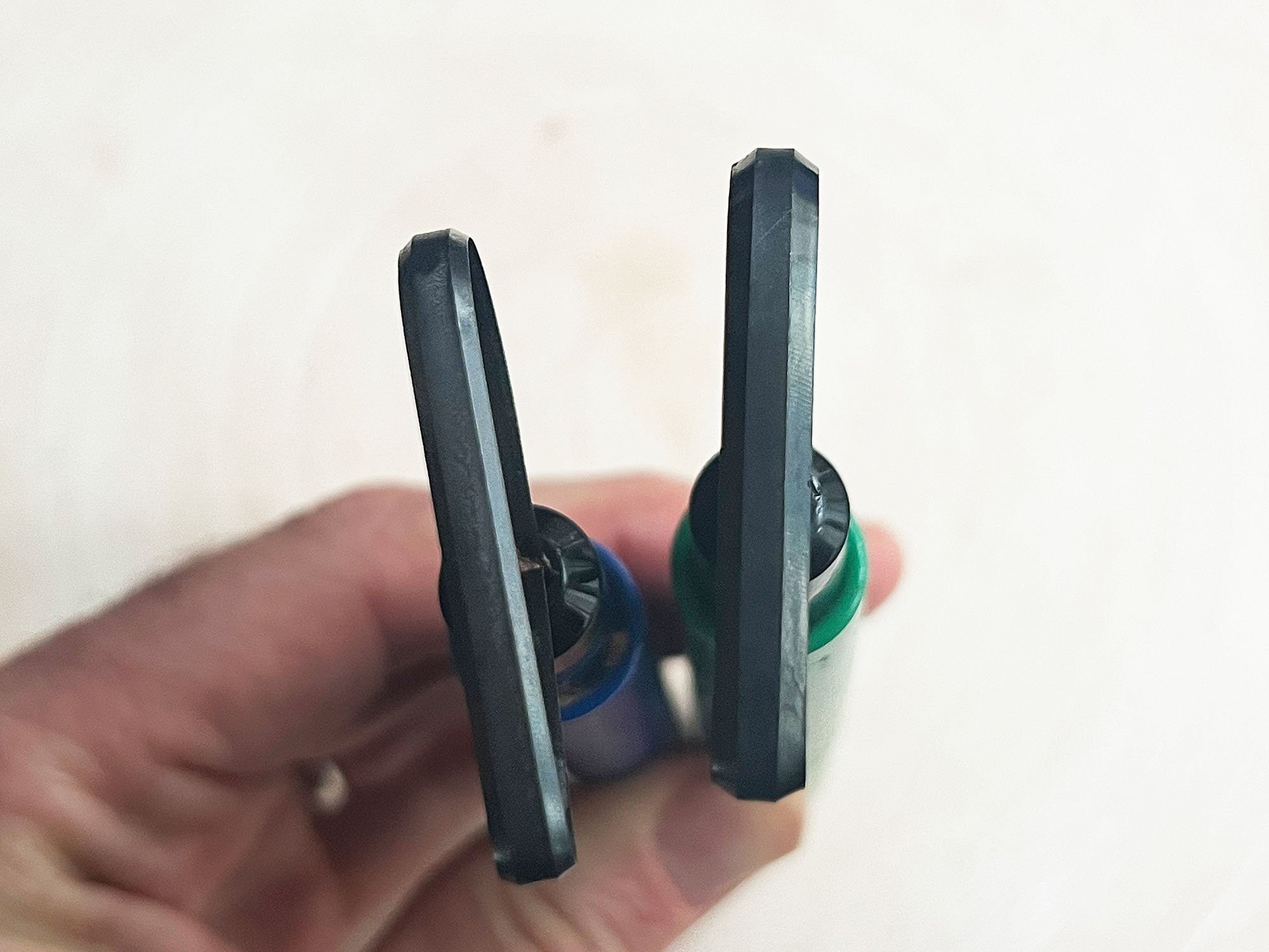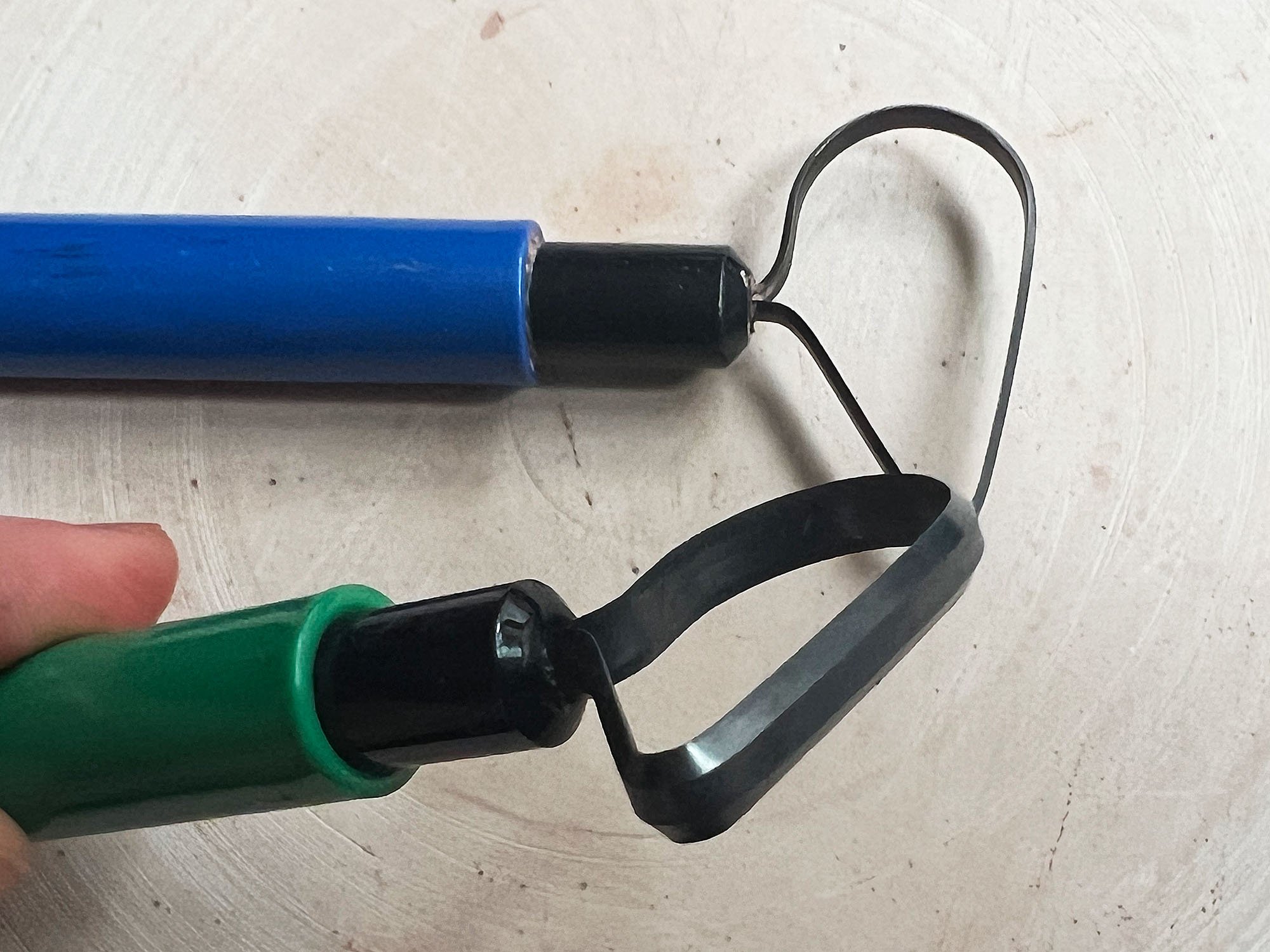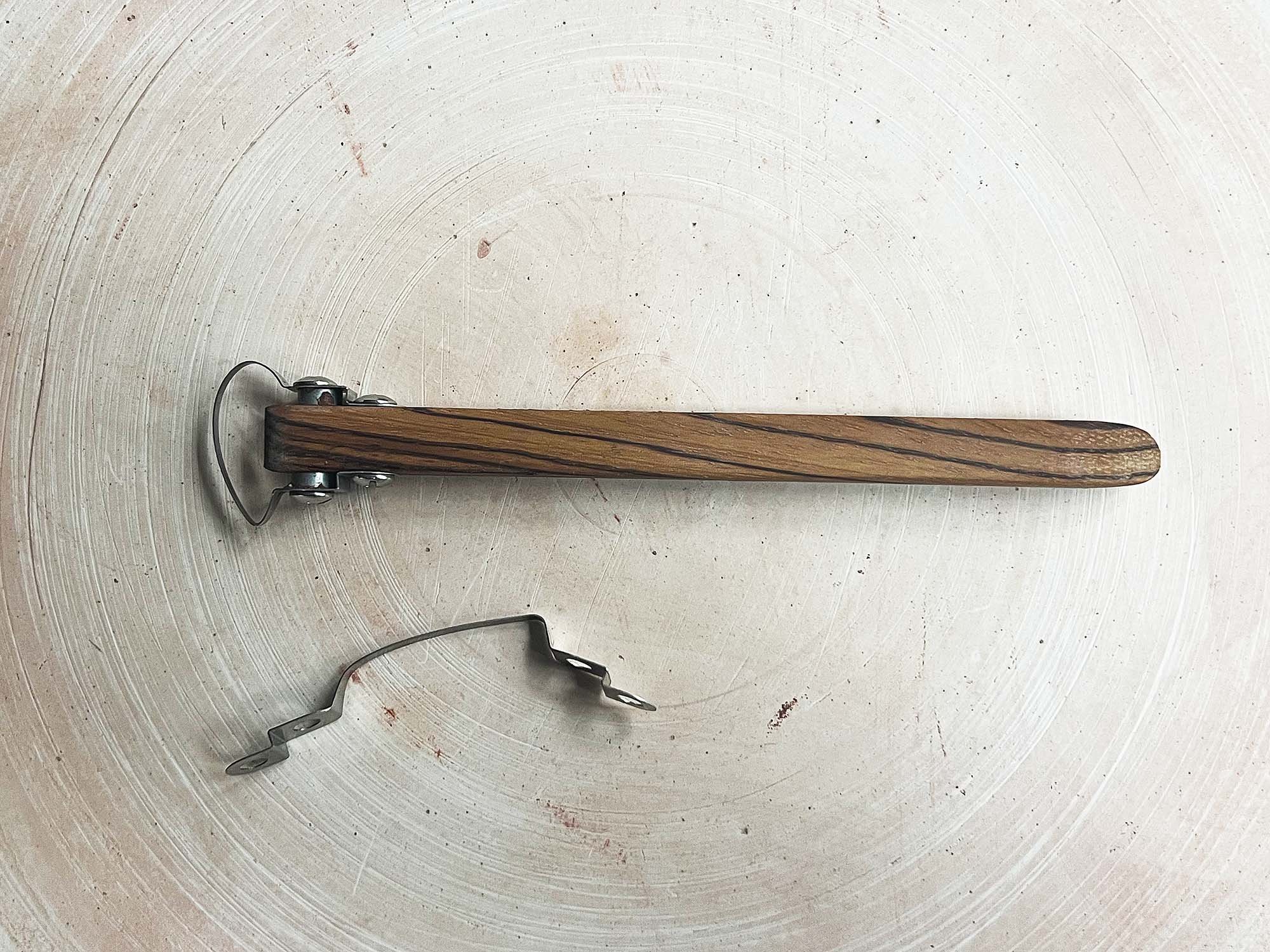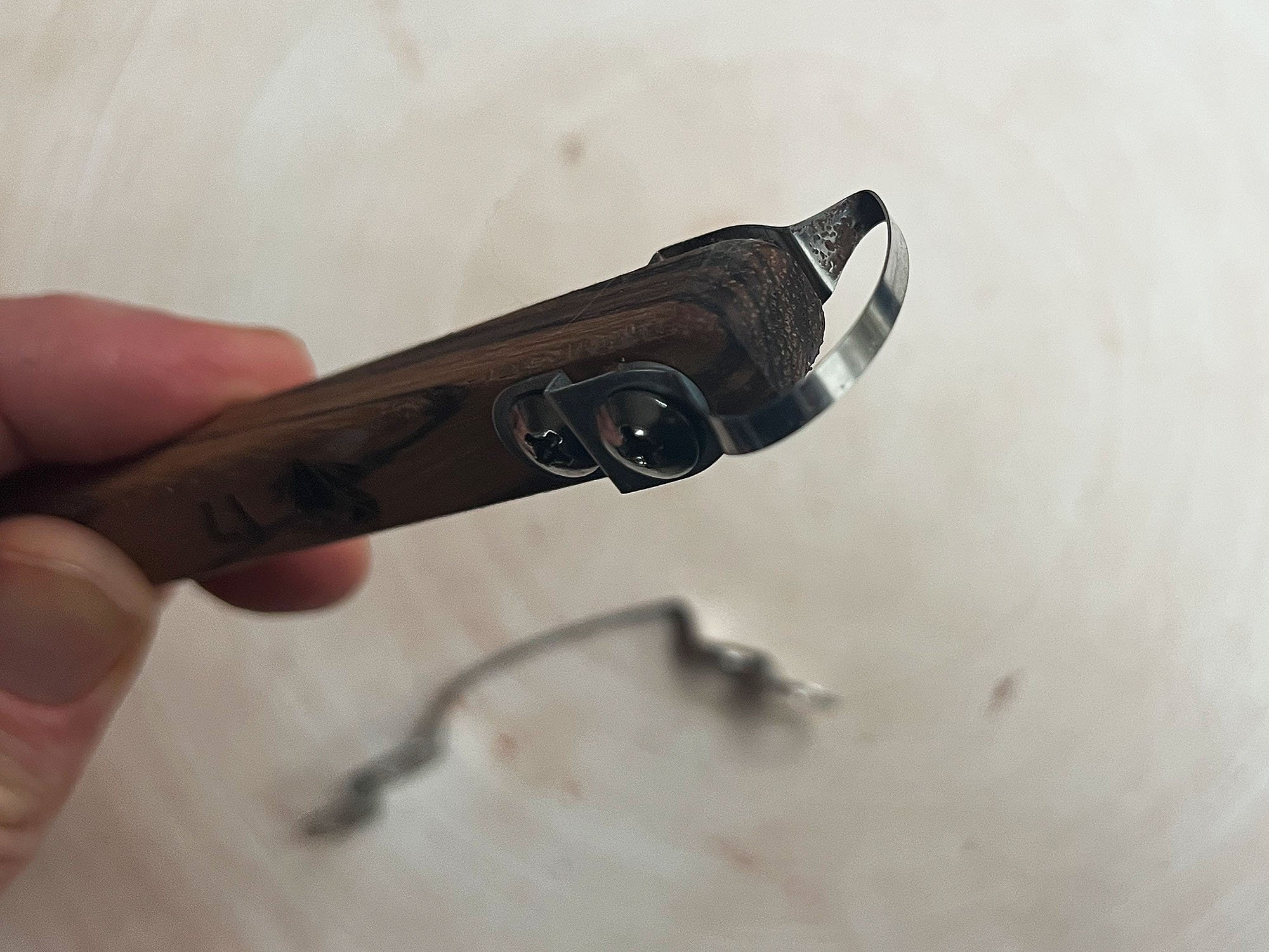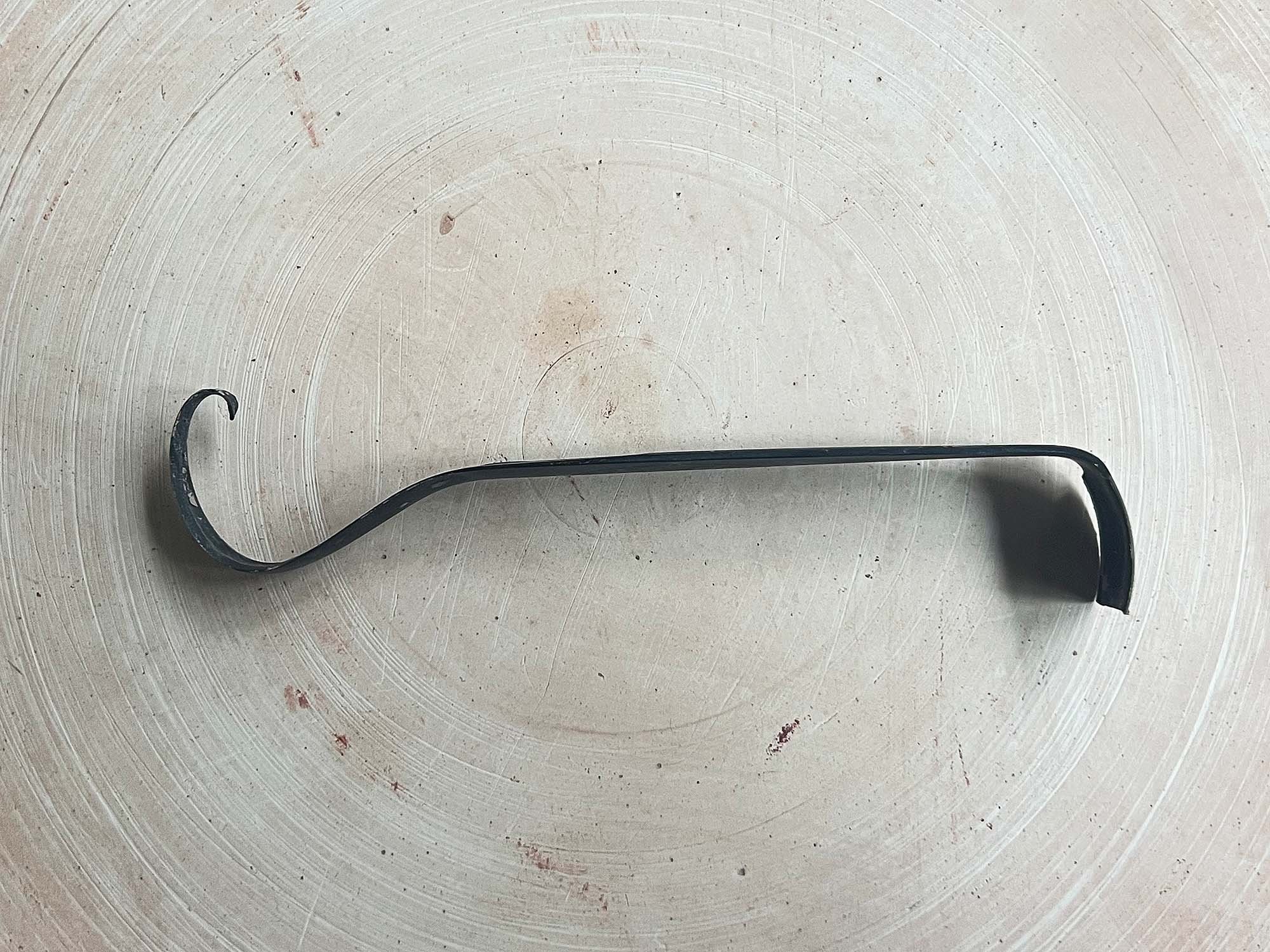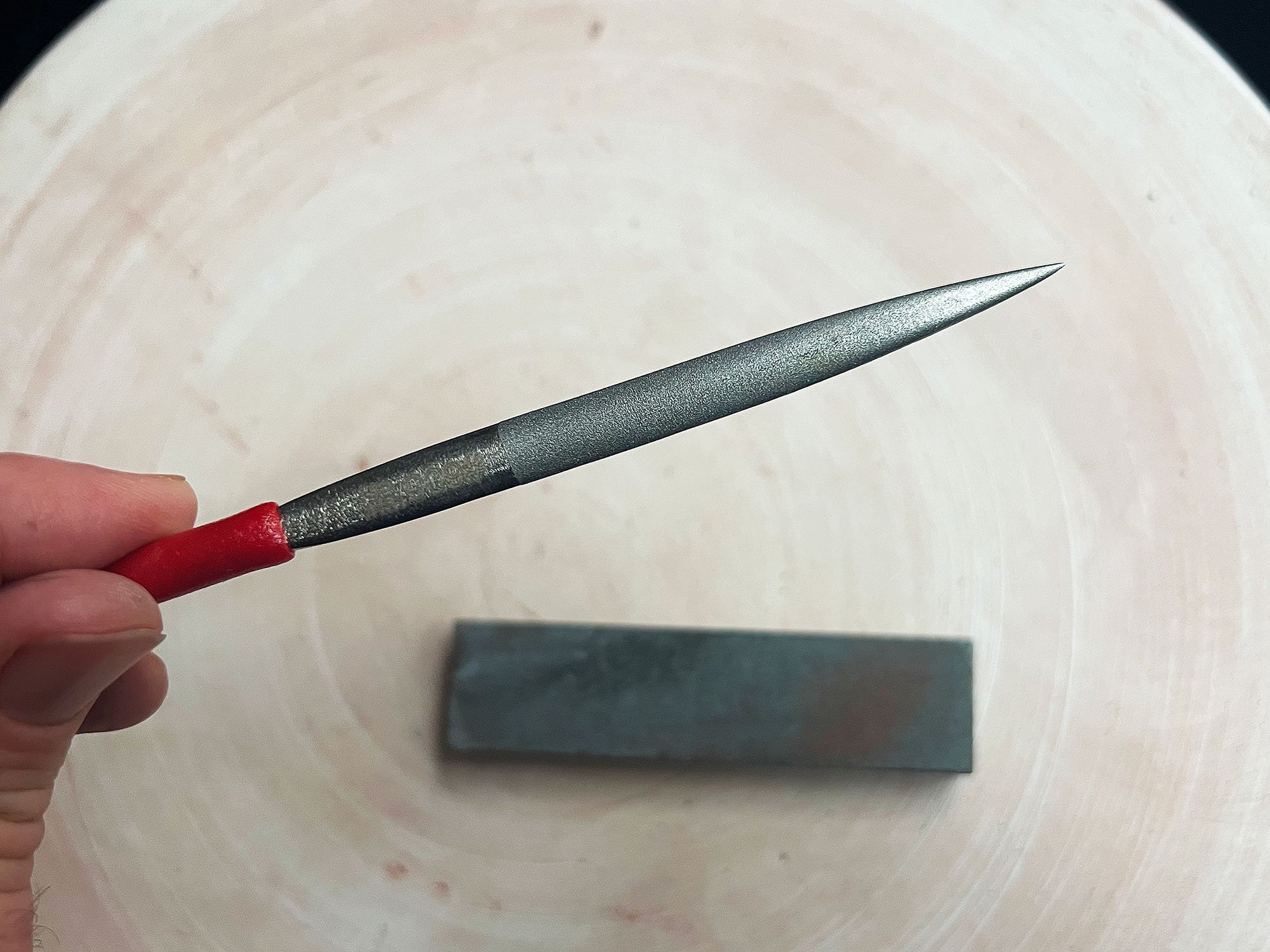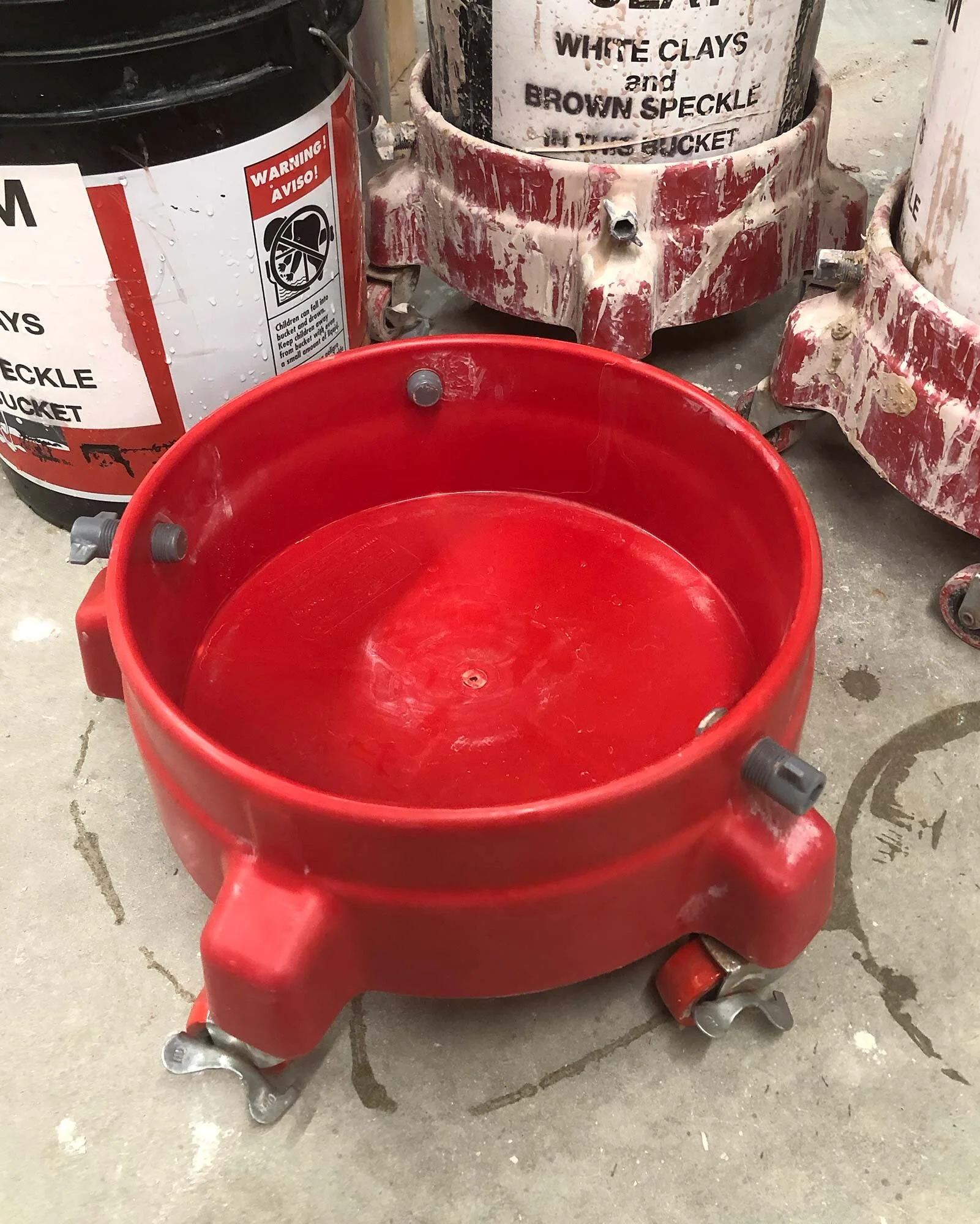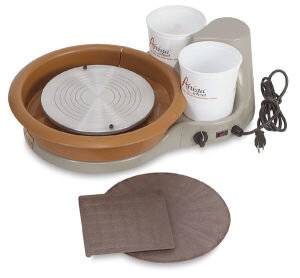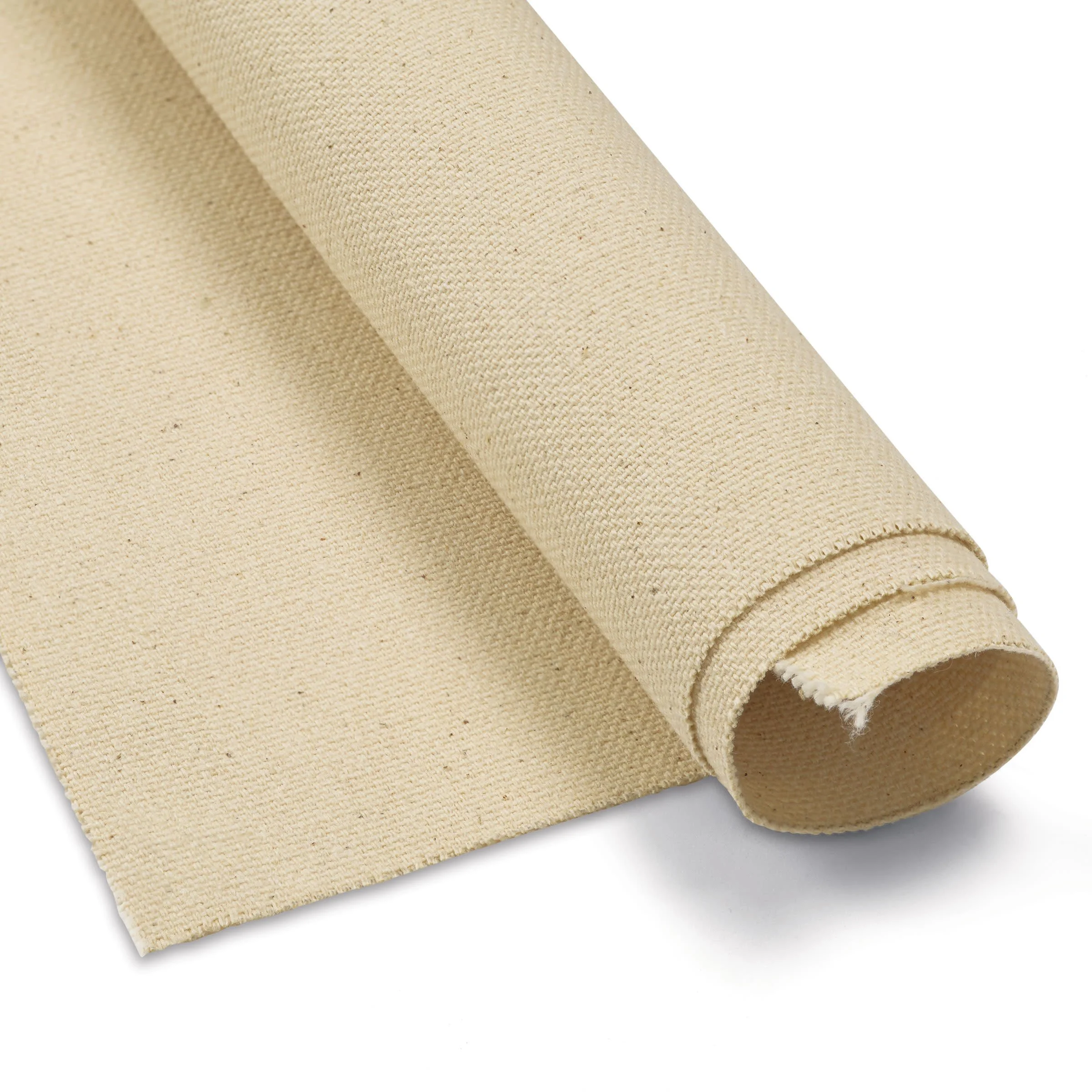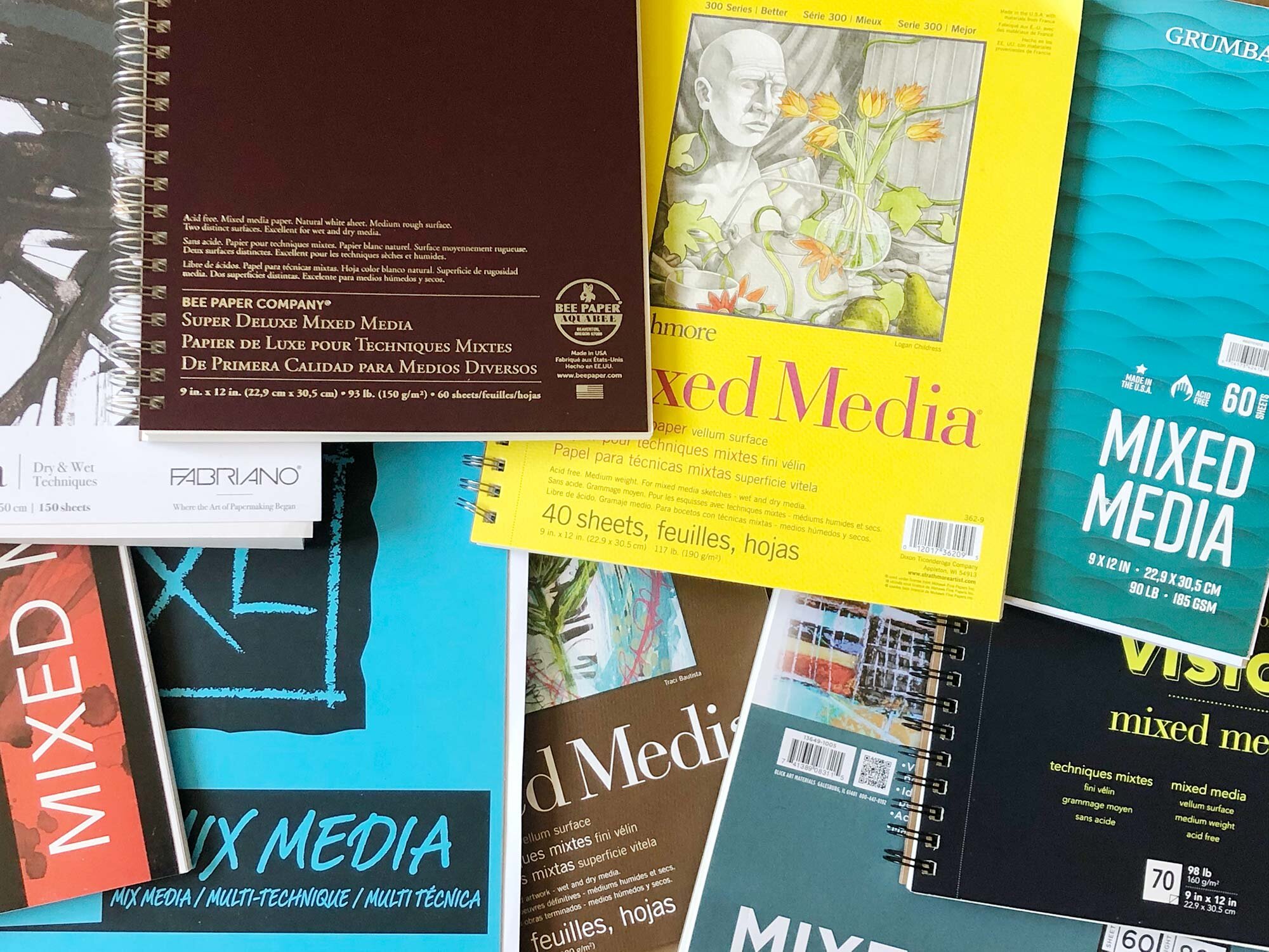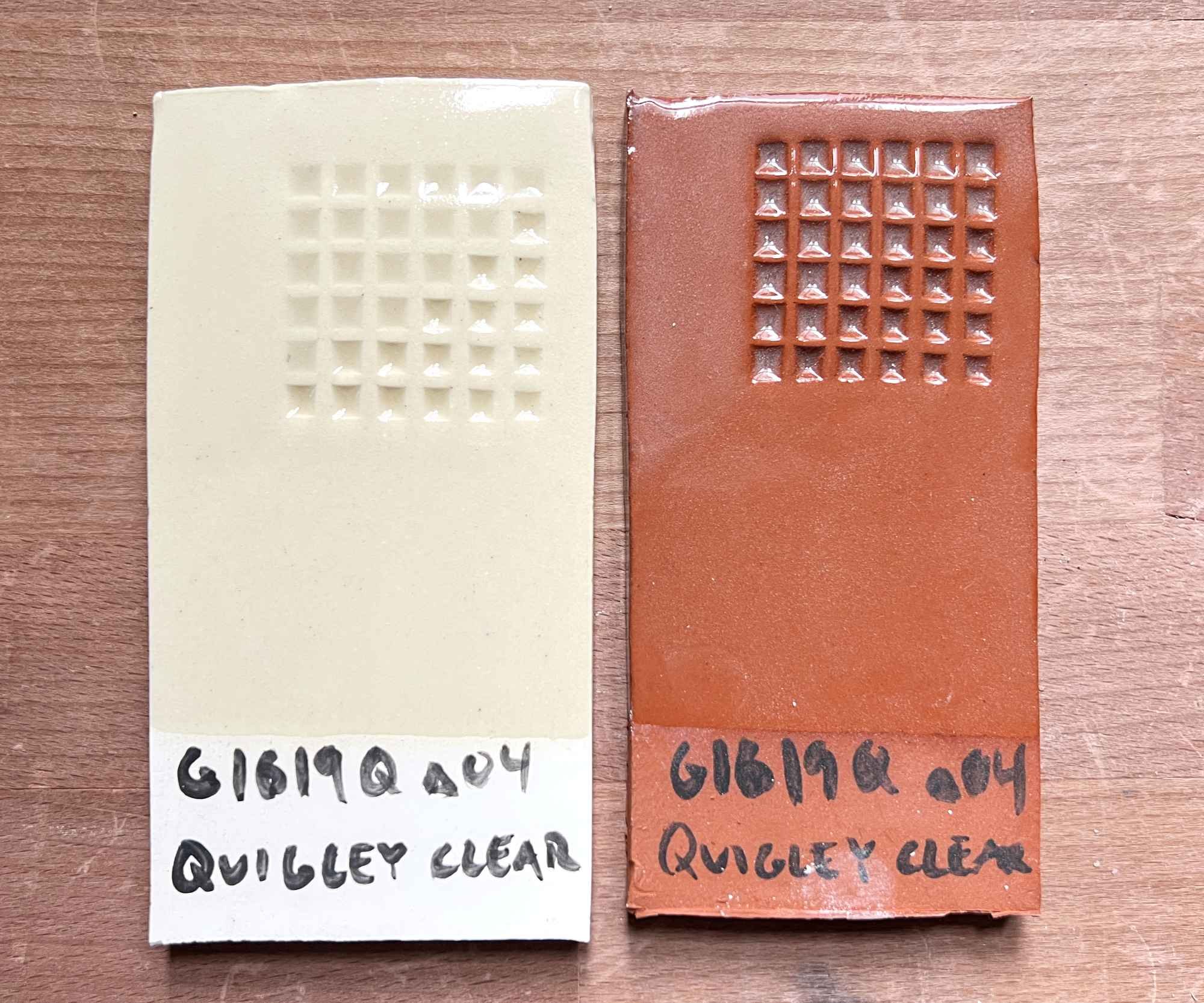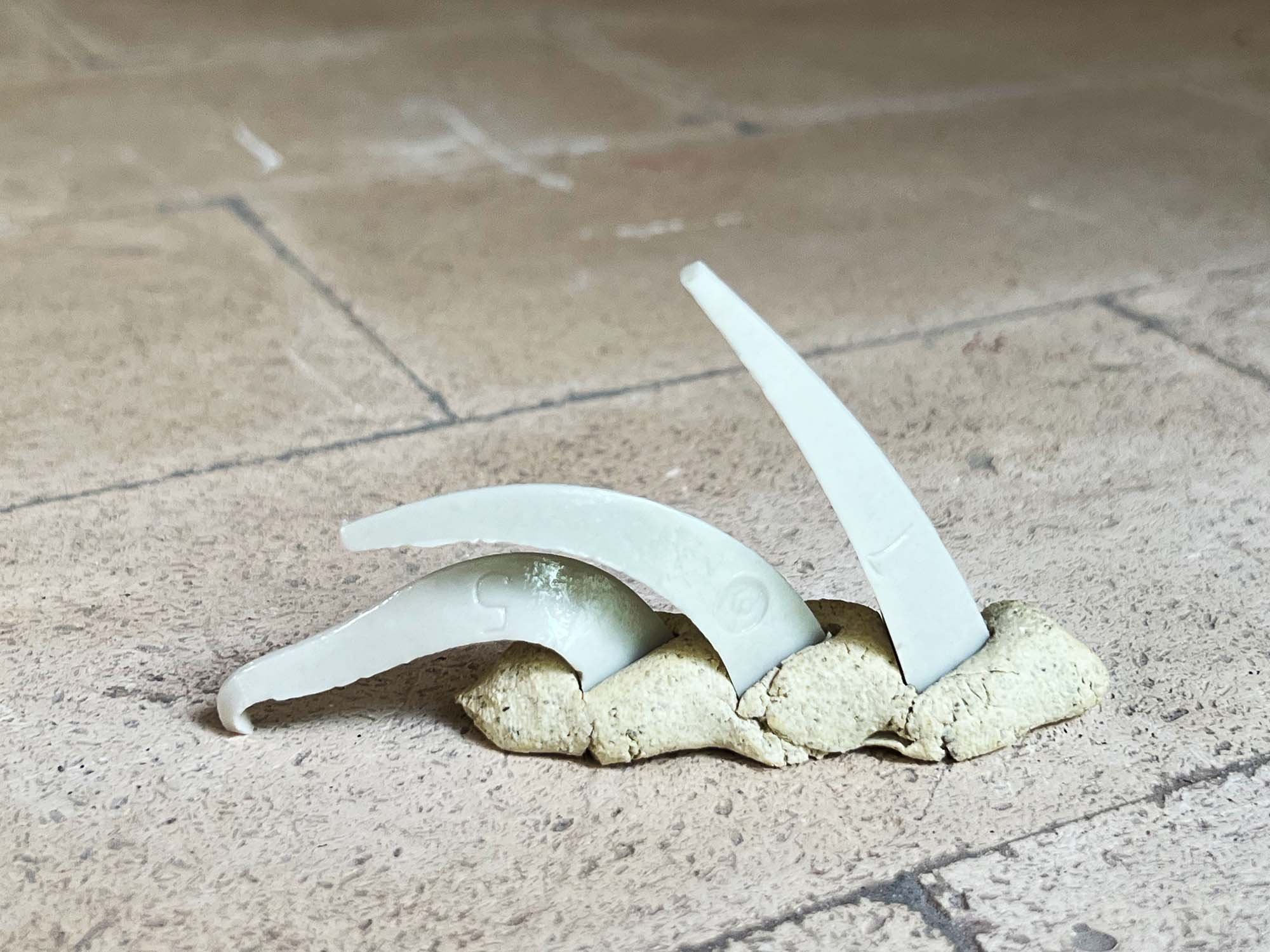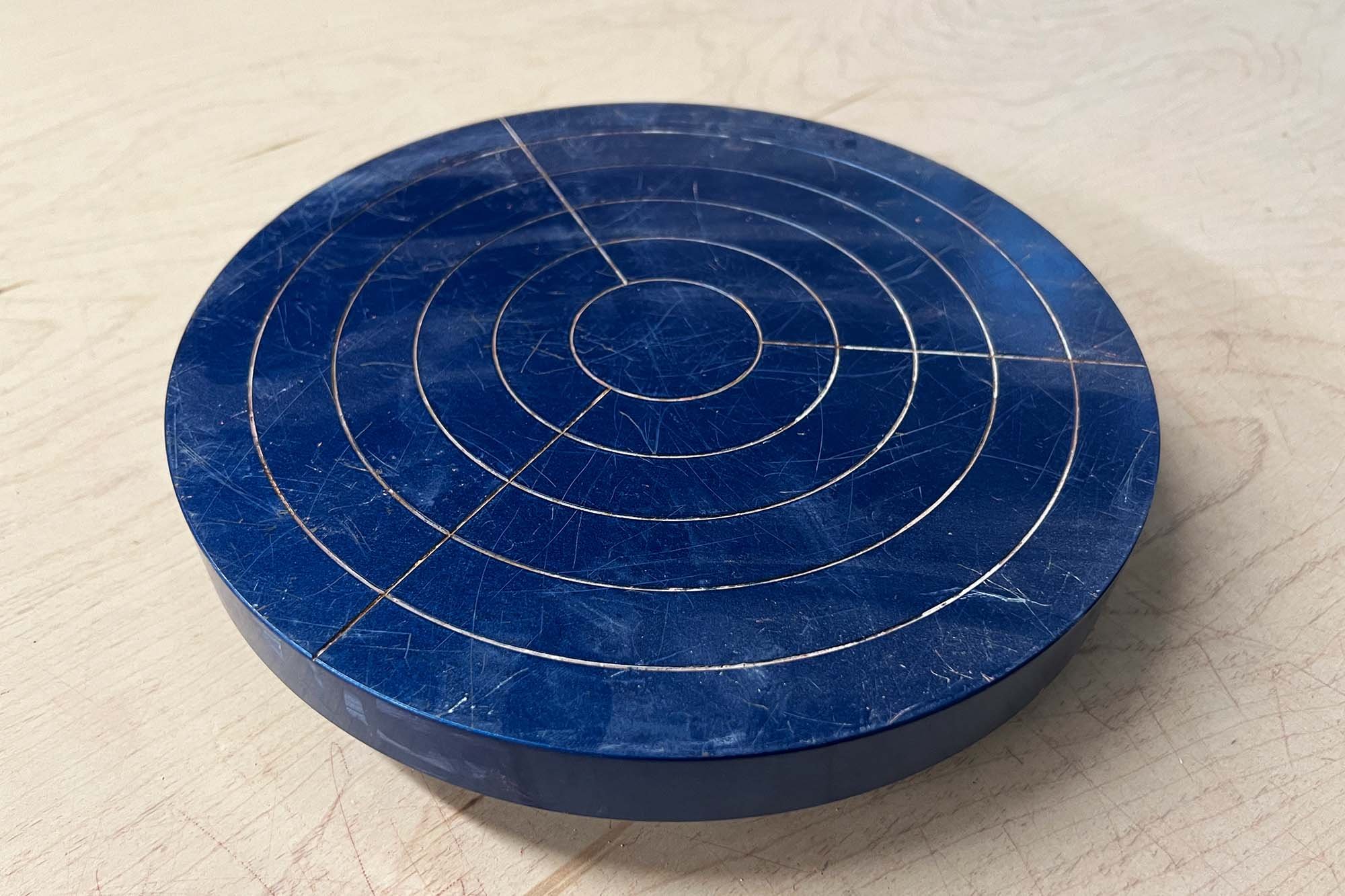Tack Sponges are economical, long-lasting synthetic sponges that are great for wheelthrowing and ceramic studios.
For pottery and wheelthrowing, it is important to have a long-lasting sponge that doesn’t shred and fall apart after a few sessions. There are quite a few high-quality options these days, and also a lot of cheap generics that fall apart almost right away.
My favorite pottery sponge is a basic synthetic round yellow tack sponge. Designed for cleaning horses or polishing leather, these are also great for use in a ceramic studio. Tack sponges are more dense and long-lasting than other synthetic sponges, are comfortable, and get the job done.
There are a variety of tack sponges available for sale online, typically in 12 packs. Look for a a quality brand, such as Decker (and avoid Creative Hobbies “tack” sponges, which I believe are mis-labeled).
Decker Tack Sponges, 12 pack
$13.33
In addition to tack sponges, natural sponges and speciality pottery sponges are good options. You can also cut your own sponges from larger yellow sponges or upholstery foam. Our full review of pottery sponges is below, along with some ideas of the best ways to utilize sponges when throwing.
For a full review of heavy duty, rectangular yellow clean up sponges, click here.
Table of Contents
Best Pottery Sponge: Tack Sponges
MudTools Sponges
Xiem Sponges
Natural Sponges
Other Sponge Options and Sponge Holders
How to Cut Your Own Sponges
Ways to Utilize Sponges in Wheelthrowing
Summary
Best Pottery and Wheelthrowing Sponge: Tack Sponges
Tack sponges are the best option for a pottery and wheelthrowing sponge. Soft but long-lasting, these synthetic sponges are also economical. Designed for cleaning horses, tack sponges have a fine-celled structure that is perfect for wheelthrowing and other uses in a ceramic studio.
To be honest, it can be hard to distinguish between synthetic yellow sponges, especially when shopping online. But through experience, I’ve learned to avoid sponges such as the “Creative Hobbies 25 pack” and other generics. These generics lose their loft and fall apart within a few weeks and while they may be fine for sponge painting or light-duty uses, they are generally not suited for intensive tasks such as wheelthrowing. That’s why it’s best to pay a bit extra and get tack sponges.
On Amazon, Decker is a trusted brand, and if you visit a ceramics store in person, you may find Kemper yellow sponges or other high-quality, round, yellow synthetic sponges.
Decker Tack Sponges
3 inches in diameter by 1 inch high
12 pack: $13.33
MudTools MudSponge
The MudTools blue, orange, and white sponge.
The MudTools sponges are rib-shaped, and measure 2.63 x 3.75 inches.
MudTools makes three speciality sponges designed for use in ceramics. Shaped like a traditional pottery rib, they are available individually or in a 3 pack. The sponges range from a typical open-cell sponge structure to a fine-pored, denser sponge. MudTools calls these:
Workhorse, blue, (corse porosity)
Absorbant, orange, (medium porosity
Finishing sponge, white (fine porosity)
The blue “workhorse” sponge is the most similar to a typical yellow round tack sponge, so if you want something fine, go with the orange or white. Many prefer the densest white sponge for use as a wheelthrowing sponge, but all three will work on the wheel or for handbuilding.
The MudSponges do cost more, usually around $8 to $12 each, but are long lasting and the range of sponge density does give you options.
MudTools MudSponge
$7.50-$9 each at Blick
$15-$17 each at Amazon, or $40 for a 3 pack at Amazon
Xiem Studio Pro Sponges
Xiem Studio Pro Sponges
Xiem Tools makes three Pro Sponges which are circular and have tapered edges. Available in corse, medium, and fine porosity, these are great sponges to add into the mix with a yellow tack sponge. They are modestly priced, typically around $5 each, are long-lasting, and do the job.
Xiem also makes a general duty clay sponge, which is red. All the Xiem Sponges are 3 inches in diameter and about 1/2 inch thick.
XiemTools Pro Sponges
$5.25 each at Blick
$5.29 each and up at Amazon
Natural Sponges
Natural Sponges are a great option for pottery, and many potters use these exclusively.
Elephant Ear Sponges
Elephant ear sponges are dense, tough, thin, and are great for wheelthrowing. They are long lasting and do hold up to intensive use. While they are a favorite for many potters, I find them a bit too thin to hold comfortably while throwing, but I do use them for finishing and smoothing. It really comes down to how you hold a sponge and what you need them for. The sponges are available in different sizes, look for something around 3” wide or bigger. You can always cut sponges smaller if needed.
Elephant Ear Sponges pricing
Amazon: 3 1/4 inch sponge, $6.29
Blick: 2 inch sponge, $1.89; 3 inch sponge, $3.79, 4 inch spong, $7.29
Value Sponge set wt wool, silk, and yellow sponges.
Other types of natural sponges, such as Wool, Silk, or Yellow sponges are great for decorative effects, such as sponge painting with underglaze, but I find them to be either too open or too prone to falling apart to be used for wheelthrowing. Your experience may differ.
Natural Sponge 4 Pack
$8.79 at Amazon
$5.29 at Blick
Other Sponge Options and Sponge Holders
Creative Hobbies has a 25 pack of 2 1/2” round sponges
Generic round yellow sponges are available in bulk under a variety of names (sometimes mislabeled as tack sponges) such as Creative Hobbies. These may seem like a great deal, and they are good for sponge painting or other light-duty uses. But these sponges will not stand up to the intense use needed for wheelthrowing. Expect them to lose their loft and fall apart within a few weeks. I’ve order packs from Creative Hobbies a few times, but never again! Learn from my mistakes and stick to tack sponges, as detailed above.
Creative Hobbies Round Sponges
6 pack: $6.99
25 pack: $16.99
Round Sponges or Stipplers (sometimes labeled “Spouncers”) are one of my favorite sponge tools to use for glazing and other decorative effects, such as adding polka dots with glaze or underglaze. Available in sizes ranges from about 1/4” to 1” in diameter, these are a great addition to your decorative arsenal. There are not really any brand names, so go for a set that looks good to you. I’ve used both the blue foam and yellow foam; my instinct is that the blue foam is a bit finer and more long lasting, but both will work ok. They do break down over time.
Round Sponge Multipack
Pack of 10: $10.14
Sponge Holders are a helpful tool for wheelthrowing and are most handy when you need to get water or slip out of the inside of a vessel. (If you leave water inside a pot you’ve just thrown it can cause cracking, uneven drying, and other problems). There are two main options for this: The Kemper Sponge Holder and the Xiem Tools X-Sponge Telescoping Sponge Holder. Is a tool like this really necessary? It may be, if you throw a lot of jars or vases with a narrow mouth. They can really help collect extra water or be used to smooth the inside of a vessel.
DIY TIP: If you don’t want to buy one of these speciality tools, you can take almost any stick (such as a drumstick) and attach a sponge to the end with a rubber band.
The Kemper Sponge Holder.
The Kemper Sponge Holder is a 13 inch long hardwood handle with a screw and small cup washer at one end. It comes with a sponge, and if that wears out, you can easily replace it with another sponge. Simple, effective, and durable, this is a great addition to your tool kit.
Kemper Sponge Holder
$12.93 at Amazon
$9.95 at Blick
The Xiem Studio X-Sponge 2 is a telescoping sponge holder that can extend from 8.5 to 26 inches, so it can really be deployed on some large pots if necessary. The sponge is a dense, long lasting, white foam sponge and there are proprietary replacement sponge heads available too. The sponge is very fine porosity, similar to the finest Xiem round sponge or the MudTools white MudSponge. The telescoping sponge holder is a real innovation and like all Xiem Studio Tools, is thoughtfully designed and well made. The dense, rounded sponge does give you more control than the yellow sponge attached to the Kemper stick.
Xiem X-Sponge
$14.52 at Amazon
$14.25 at Blick
How to Cut Your Own Sponges
One of the most economical sponge options is to take a large yellow clean-up sponge, and cut it into 8 or 12 pieces. My favorite sponge is the Armaly ProPlus Grouting and Concrete sponge, which is the best heavy duty clean up sponge I’ve found. (See a full review here).
To do this, you can draw lines on the sponge with a sharpie and then using a sharp chef’s knife or scissors, cut into pieces. The best way is to plan for 12 sponges—which is a pretty good value when you start with one large sponge.
It’s also great to cut big yellow sponges into pieces as they start to fall apart. These can be repurposed for clean-up sponges or use a rubber band to attach them to a stick for a DIY sponge holder.
Armaly ProPlus Large Sponge
1 sponge: $7.95 at Amazon
6 pack: $15.29 at Lowes, $32.79 at Amazon
How to Utilize a Sponge for Wheelthrowing
I prefer to throw with one sponge in my right hand. The sponge doesn’t necessarily touch the clay, but it is helpful for organizing my hand in a comfortable way, and as a small water reservoir. But there are as many ways to use a sponge as there are potters.
A few quick tips on sponges and throwing:
> When throwing, try holding no sponge, 1 sponge in your throwing hand, or 2 sponges (one in each hand). You will quickly find the method that works for you. Two sponges may be a great way for beginners to get the feel of clay and help focus the pressure.
> Keep in mind that you should have one point of pressure on the inside, and one on the outside. This could be a fingertip, a knuckle, or use a sponge to make that single point of contact.
> The best sponge is the one that is most comfortable for you. Check out the advice above, and try out a few sponges. Experience is the only way to figure out what works for you.
> Set up a large yellow sponge for easy clean up of your wheelhead or any spills / splashes. They are also great for wiping your hands. I wipe and clean my hands often when throwing, especially if I am going to touch a switch on the wheel, or switch to a shaping tool such as a rib. Large yellow sponges are the best way to quickly clean your hands.
Summary
This post has reviewed small sponges for use while throwing on the wheel, and given advice on other sponge tools along with a few DIY tips and ideas of how to use a sponge. The top recommended sponge is a synthetic round yellow tack sponge, but there are a lot of options.
What sponges do you use? Any tips for sponges and wheel throwing? Let us know in the comments.
You Might Also Enjoy:
Best Heavy Duty Clean Up Sponges
